new posts in all blogs
Viewing Blog: A Fuse #8 Production, Most Recent at Top
Results 26 - 50 of 5,353

About me: "Well, I work at the most succulent plum of children's branches in New York City. The Children's Center at 42nd Street not only exists in the main branch (the one with the big stone lions out front) but we've a colorful assortment of children's authors and illustrators that stop on by. I'm a lucky fish. By the way, my opinions are entirely my own and don't represent NYPL's in the least. Got blame? Gimme gimme gimme!"
Statistics for A Fuse #8 Production
Number of Readers that added this blog to their MyJacketFlap: 283
 “In Adam’s Fall, we sinned all.” That catchy little ditty was from one of the earlier abecedarian picture books for children in America (the 1784 edition of The New England Primer, in case you’re curious). Practically from our nation’s inception, alphabet books were a go-to resource for teaching children to read. Every year more and more of them come out, but how many can you name off the top of your head? Just before typing this I was reading Chicka Chicka Boom Boom to my son and marveling at how Bill Martin Jr. managed to create an actual honest-to-goodness alphabet classic. I don’t know if any of the books on today’s list will ever hit such heights, but I the alphabet books of 2016 have dabbled in some truly sophisticated fare.
“In Adam’s Fall, we sinned all.” That catchy little ditty was from one of the earlier abecedarian picture books for children in America (the 1784 edition of The New England Primer, in case you’re curious). Practically from our nation’s inception, alphabet books were a go-to resource for teaching children to read. Every year more and more of them come out, but how many can you name off the top of your head? Just before typing this I was reading Chicka Chicka Boom Boom to my son and marveling at how Bill Martin Jr. managed to create an actual honest-to-goodness alphabet classic. I don’t know if any of the books on today’s list will ever hit such heights, but I the alphabet books of 2016 have dabbled in some truly sophisticated fare.
2016 Alphabet Books
ABC by Xavier Deneux

I was very good when I posted the board book list. I didn’t say how many names featured were French. After all, once you start seeing the influence of the French on board books, it’s difficult to stop. M Deneux is no exception. This isn’t his first time around the block, but his previous titles do feel as though they were gearing themselves up to this. It is the culmination of all that he has accomplished.
ABC: The Alphabet From the Sky by Benedikt Grob and Joey Lee
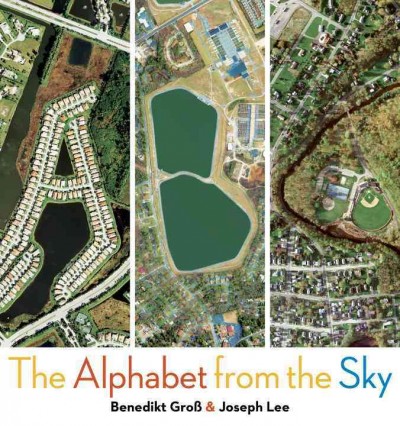 Is it as cool as it looks from the cover? My friend, it’s even cooler. Every year I have regrets about the books I didn’t have a chance to officially review. This year it included this book. It’s probably more for older kids and there’s one letter that I think they could have improved, but all told it’s a remarkable effort. It’s also a neat way of talking about our planet. AND it could well be a great book to take onto an airplane with a kid, since the shots will look somewhat familiar from 10,000 feet in the air.
Is it as cool as it looks from the cover? My friend, it’s even cooler. Every year I have regrets about the books I didn’t have a chance to officially review. This year it included this book. It’s probably more for older kids and there’s one letter that I think they could have improved, but all told it’s a remarkable effort. It’s also a neat way of talking about our planet. AND it could well be a great book to take onto an airplane with a kid, since the shots will look somewhat familiar from 10,000 feet in the air.
ABCs on Wheels by Ramon Olivera

It’s pretty standard stuff. Vehicles plus the alphabet. Yep. But Olivera’s art is what makes this book a bit better than a lot of similar titles out there. It has this cool retro vibe that obliquely references James Flora for spice.
An Artist’s Alphabet by Norman Messenger
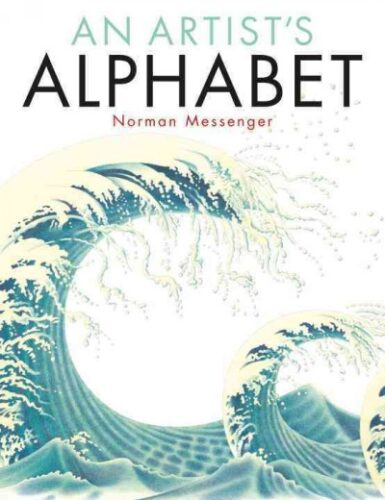
Undoubtedly there must have been alphabet books before now that integrated both upper and the lowercase letters into their art, but I think it’s fair to say that almost none of these are as visually stunning as Messenger’s book. I was just sitting here trying to figure out how I’d describe it. It’s not hyper-realism, though there’s a bit of realism to some of the shots. And it’s not surreal in a David Wiesner sense. I hate to use the d-word, but it seems I have no choice. It’s dreamlike. Nuff said.
A Beauty Collected by Rachel Garahan
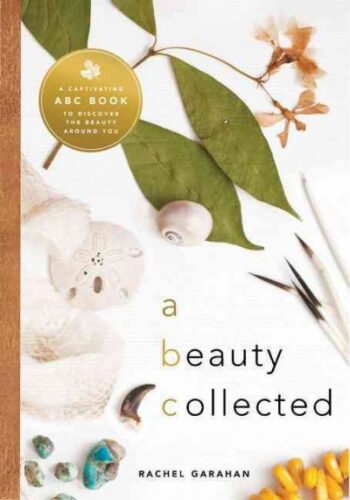
If you read this blog regularly then you’ll know that I have a weakness for beautiful photography. And they don’t come much more beautiful than Garahan’s title. I hesitate to call this a picture book. Coming in at 192 pages it is the first true coffee table alphabet book I’ve ever seen of its kind. So why include it on this list? Because in addition to being just the loveliest thing, older kids really do enjoy it. It has the kind of purified beauty that appeals to a wide range of ages. I’m a fan.
Never Insult a Killer Zucchini! by Elana Azone & Brandon Amancio, ill. David Clark
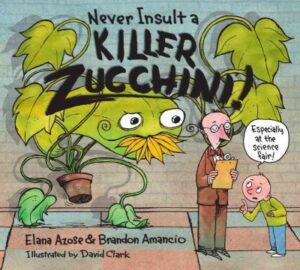
Only two alphabet books on this list truly count as having any kind of a plot. This is another book that will appeal to older kids. The alphabet trope is more of a way of setting up the story (such as it is) than anything else. That said, it’s funny. And funny alphabet books are fairly rare indeed.
Oops, Pounce, Quick, Run! An Alphabet Caper by Mike Twohy
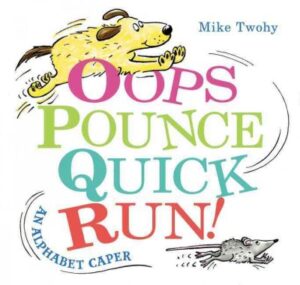 I know a librarian who is so gaga over this book she’ll bring you around to it pretty quickly. There’s just one word a page, and it follows the story of a canine and its dogged (har har) pursuit of a mouse. If you’re looking for a really simple alphabet book with a clear plot and even clearer pictures, this is your best bet. I’ve a lot of really sophisticated alphabet books on this list today so it’s nice to have something on the younger end of the scale as well.
I know a librarian who is so gaga over this book she’ll bring you around to it pretty quickly. There’s just one word a page, and it follows the story of a canine and its dogged (har har) pursuit of a mouse. If you’re looking for a really simple alphabet book with a clear plot and even clearer pictures, this is your best bet. I’ve a lot of really sophisticated alphabet books on this list today so it’s nice to have something on the younger end of the scale as well.
Olinguito, from A to Z! / Olinguito, de la A a la Z! by Lulu Delacre

Can I convey adequately how deeply satisfying it’s been this year to see this book showing up time and again on so many Best of the Year lists? DEEPLY satisfying, sez I. This book does so many different things all at the same time but never overextends itself. If I had my way it would be a staple in every library.
Interested in the other upcoming lists of this month? Here’s the schedule so that you can keep checking back:
December 1 – Board Books
December 2 – Board Book Adaptations
December 3 – Nursery Rhymes
December 4 – Picture Book Readalouds
December 5 – Rhyming Picture Books
December 6 – Alphabet Books
December 7 – Funny Picture Books
December 8 – Calde-Nots
December 9 – Picture Book Reprints
December 10 – Math Picture Books
December 11 – Bilingual Books
December 12 – International Imports
December 13 – Books with a Message
December 14 – Fabulous Photography
December 15 – Fairy Tales / Folktales
December 16 – Oddest Books of the Year
December 17 – Older Picture Books
December 18 – Easy Books
December 19 – Early Chapter Books
December 20 – Graphic Novels
December 21 – Poetry
December 22 – Fictionalized Nonfiction
December 23 – American History
December 24 – Science & Nature Books
December 25 – Transcendent Holiday Titles
December 26 – Unique Biographies
December 27 – Nonfiction Picture Books
December 28 – Nonfiction Chapter Books
December 29 – Novel Reprints
December 30 – Novels
December 31 – Picture Books

 If potential authors of picture books are given one piece of advice when they’re first starting out, it tends to be, “For the love of all that’s good and holy DO NOT let your picture books rhyme!!!” And for good reason. Few things in life are quite as painful as poorly rhymed picture books. Too many folks think it’s a breeze but there’s a reason Dr. Seuss has never been adequately replicated.
If potential authors of picture books are given one piece of advice when they’re first starting out, it tends to be, “For the love of all that’s good and holy DO NOT let your picture books rhyme!!!” And for good reason. Few things in life are quite as painful as poorly rhymed picture books. Too many folks think it’s a breeze but there’s a reason Dr. Seuss has never been adequately replicated.
Now there was an article back in June on the British blog Picture Book Den that took time to compare British picture books in a Waterstones to American picture books in a Barnes and Nobles. Here’s what the writer had to say on the subject of rhyme:
Rhyming picture books used to be much more popular with publishers in the US than UK. I suspect that was because the US internal market is huge and they didn’t worry about overseas co-editions and translations as much as UK publishers. So in the US there has always been a high number of rhyming picture books and Dr Seuss continues to remain far more prominent than in the UK. Meanwhile in the UK, rhyme is still growing on the back of the phenomenal success of Julia Donaldson.
Fascinating. You’ll certainly find no Donaldson on this list (I’d say Brits find America’s dismissal of Donaldson as baffling as we find their neutrality on Dr. Seuss) but you will find folks with a good ear and a clever pen. There may be a bit of repetition here with the previous Readaloud list since many are the readaloud that rhymes as well. Fortunately, there are some real gems as well.
2016 Rhyming Books
Ada Twist, Scientist by Andrea Beaty, ill. David Roberts
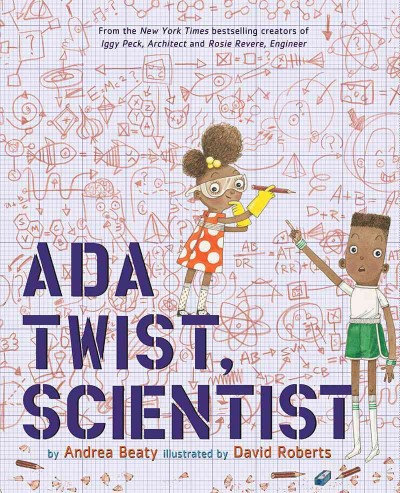
Not that the book with its current standing at #1 on the New York Times Bestselling Picture Books listing needs any help. Still and all, do you think Ms. Beaty would be where she is today if she didn’t know how to make a proper rhyme? Her cadences click. Her rhymes are sublime. The woman knows what she’s doing and the evidence is right before your eyes.
Billions of Bricks: A Counting Book About Building by Kurt Cyrus
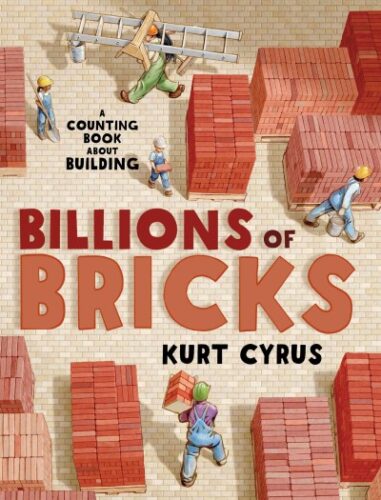
I’ve a two-year-old that loves construction. With that in mind I took home this book, thinking it might appeal. It does. The rhymes are subtle but there, and the art is incredible. Keep an eye on the guy with the ladder as you go through it. He’s like this little walking Easter Egg, like Anno or Waldo.
A Dark, Dark Cave by Eric Hoffman, ill. Corey R. Tabor
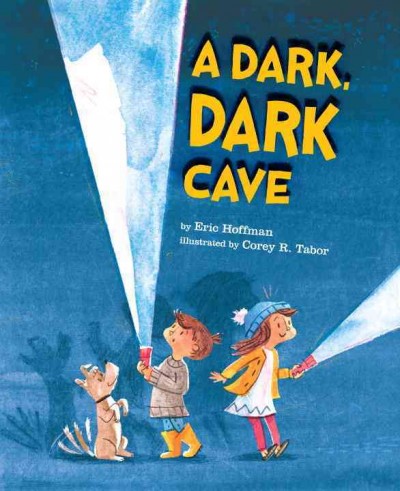
There was a time when I thought maybe this book could have Caldecott potential. I’m not sure it does (2016 is a shockingly strong year for contenders) but I still like it a lot.
88 Instruments by Chris Barton, ill. Louis Thomas

The two-year-old is also into instruments. I suspect you’re beginning to figure out how I know to remember that one book was rhyming this year vs. another. I pretty much just use my kids to sort through my memories. So far so good on that front.
The Forgetful Knight by Michelle Robinson, ill. Fred Blunt
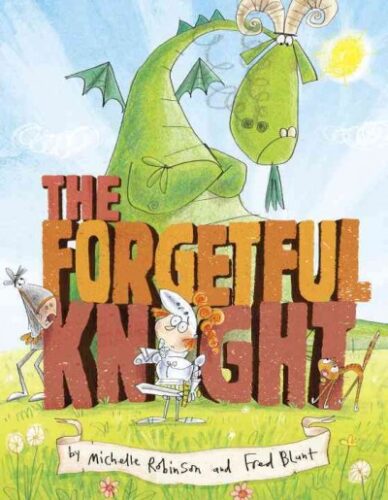
It never hurts when a picture book rhymes AND is funny.
Hensel and Gretel Ninja Chicks by Corey Rosen Schwartz & Rebecca J. Gomez, ill. Dan Santat

Please see previous statement on how it never hurts when a picture book rhymes AND is funny.
One Day in the Eucalyptus Eucalyptus Tree by Daniel Bernstrom, ill. by Brendan Wenzel

Still one of my favorites.
Teeny Tiny Toady by Jill Esbaum, ill. Keika Yamaguchi
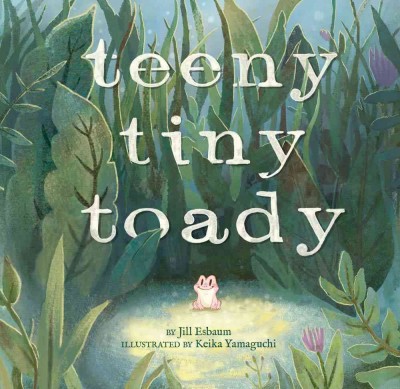
A little tiny toad rescues its oversized family members through smarts and cunning. A feminist metaphor picture book if ever I heard of one.
A Toucan Can, Can You? by Danny Adlerman, ill. Various
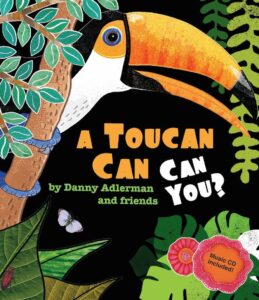
I tried not to include any songs on this list (it’s just not fair to include them) but I figured rhyming chants belonged. A toast then to rhyming chants! Huzzah!
You Belong Here by M.H. Clark, ill. Isabelle Arsenault

Of all the books on this list, this is undoubtedly the most beautiful. Arsenault drives me crazy. She’s Canadian so she’ll never win a Stateside literary award from ALA unless she takes the plunge and lives here for a while. Fortunately we can enjoy the fruits of her labors. This one’s a dreamboat of a book. Check it out if you don’t believe me.
You’re My Boo by Kate Dopirak, ill. Lesley Breen Withrow

I don’t go in for cutesy picture books, you know. They do nothing for me. That’s why this book was a bit of a surprise. It’s cute, sure enough, but it’s rather clever as well. Plus I read it to some kids and they really enjoyed it. That may have tipped the vote in the book’s favor as well.
Interested in the other upcoming lists of this month? Here’s the schedule so that you can keep checking back:
December 1 – Board Books
December 2 – Board Book Adaptations
December 3 – Nursery Rhymes
December 4 – Picture Book Readalouds
December 5 – Rhyming Picture Books
December 6 – Alphabet Books
December 7 – Funny Picture Books
December 8 – Calde-Nots
December 9 – Picture Book Reprints
December 10 – Math Picture Books
December 11 – Bilingual Books
December 12 – International Imports
December 13 – Books with a Message
December 14 – Fabulous Photography
December 15 – Fairy Tales / Folktales
December 16 – Oddest Books of the Year
December 17 – Older Picture Books
December 18 – Easy Books
December 19 – Early Chapter Books
December 20 – Graphic Novels
December 21 – Poetry
December 22 – Fictionalized Nonfiction
December 23 – American History
December 24 – Science & Nature Books
December 25 – Transcendent Holiday Titles
December 26 – Unique Biographies
December 27 – Nonfiction Picture Books
December 28 – Nonfiction Chapter Books
December 29 – Novel Reprints
December 30 – Novels
December 31 – Picture Books

 To be fair, every single picture book, with the exception of the wordless ones, is a readaloud. You’re not supposed to just silent there silent and stony when a child’s on your lap. Picture books are meant to engage through the voice of the reader. That said, not all of them do well when it comes to reading them to groups. When I first because a children’s librarian I learned the hard way that some classic titles (Horton Hatches the Egg, Blueberries for Sal, etc.) die ignoble deaths at your hands when read to groups of preschoolers. I began to rely on a core group of picture books with every storytime. The danger with that, though, is that you never try anything new.
To be fair, every single picture book, with the exception of the wordless ones, is a readaloud. You’re not supposed to just silent there silent and stony when a child’s on your lap. Picture books are meant to engage through the voice of the reader. That said, not all of them do well when it comes to reading them to groups. When I first because a children’s librarian I learned the hard way that some classic titles (Horton Hatches the Egg, Blueberries for Sal, etc.) die ignoble deaths at your hands when read to groups of preschoolers. I began to rely on a core group of picture books with every storytime. The danger with that, though, is that you never try anything new.
With all this in mind, these are some of the picture books of 2016 that I felt do particularly well when read to groups. Obviously there are other great ones out there. These are just the ones that come immediately to mind.
2016 Picture Book Readalouds: For Preschoolers
Box by Min Flyte, ill. Rosalind Beardshaw

About this time you’ll start noticing some duplication between my lists. The fact of the matter is that if a book is truly good, it isn’t just one thing. Box appeared already on the Board Book list, but that doesn’t mean it doesn’t do well as a readaloud too. So prepare for some familiar covers!
I Dare You! by Nicole Maubert
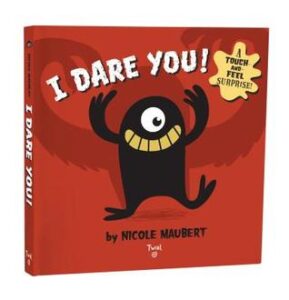 Try running around the room with this one, getting the kids to touch the witch’s warts, pet the monsters’ fur, and stick their hands in the slathering jaws of hungry beasts. As long as it keeps in one piece, it will be beloved.
Try running around the room with this one, getting the kids to touch the witch’s warts, pet the monsters’ fur, and stick their hands in the slathering jaws of hungry beasts. As long as it keeps in one piece, it will be beloved.
Monsters Go Night-Night by Aaron Zenz
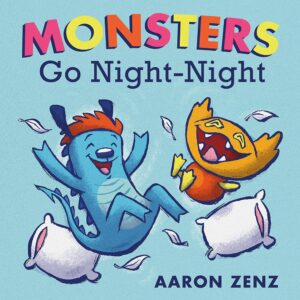
I adore this. I mean talk about a book that upsets expectations. I’m putting it on the younger list here because I can, but much like Mac Barnett and Adam Rex’s Guess Again (a highly underrated readaloud) this book upsets the expectations of its potentially jaded readership.
Grumpy Pants by Claire Messer
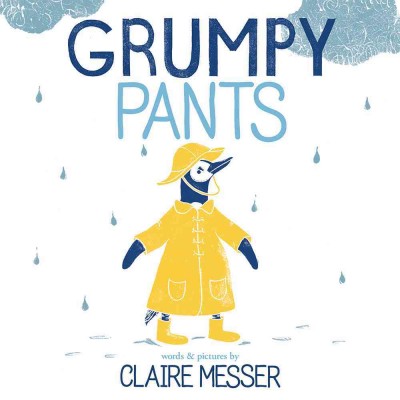
I had to be told by a children’s librarian in my branch that this book is a wonderful readaloud for groups. I knew it was lovely to look at but until she spoke up I never would have thought to consider it for large groups.
2016 Picture Book Readalouds: That You Can Sing
5 Little Ducks by Denise Fleming
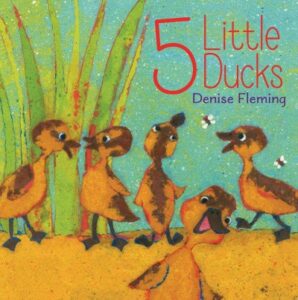
It still works if you don’t know the tune, but I think singing it is best. Plus look at that duck that’s front and center on the cover. How can you say no to that little guy?
Groovy Joe: Ice Cream & Dinosaurs by Eric Litwin, ill. Tom Lichtenheld
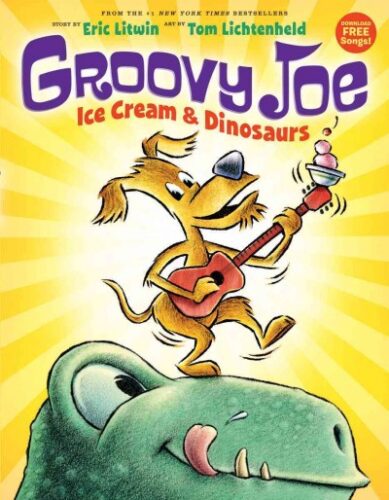
While the title does sound like free word associations for kids (“Name me two things your little brother would want at his birthday party”) this is the Pete the Cat author at work. The book’s pretty catchy. For the music, download the free song.
Old MacDonald Had a Truck by Steve Goetz, ill. Eda Kaban
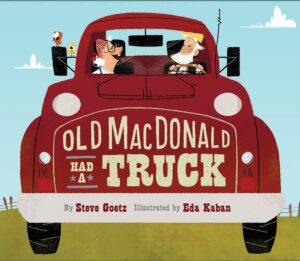
For years Jessica Souhami’s version of Old MacDonald was my favorite, and it may still be at the top of the ranking (WHEN is someone going to republish it?!???), but this book is gunning to be a close second. You’ve got Mrs. MacDonald welding, plenty of construction equipment, and just gorgeous art. Keep an eye on that Eda Kaban. That name may become better known in the future.
2016 Picture Book Readalouds: That Rhyme
A Dark, Dark Cave by Eric Hoffman, ill. Corey R. Tabor

Aww. This was one of my favorites early in the year. It sort of reminds me of the Berenstain Bears classic Spooky Old Tree in a way. Fear, it seems, is a great motivator when coming up with picture book themes.
Dinosaur Rap by John Foster, ill. Debbie Harter, sung by Mikey Henry Jr.
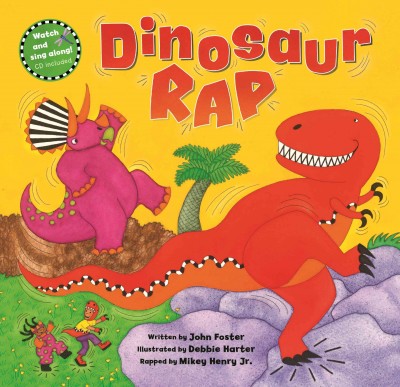
I usually avoid any book that includes the word “rap” anywhere near its title with a ten-foot-pole. But the bright art and fun rhymes convinced me otherwise. Technically I think it’s a song but I preferred reading it by itself. The rhymes hold up.
The Forgetful Knight by Michelle Robinson, ill. Fred Blunt

So much fun with a nice little twist at the end. And who doesn’t love a twist ending?
Hensel and Gretel Ninja Chicks by Corey Rosen Schwartz & Rebecca J. Gomez, ill. Dan Santat

Funny goes a long way with me, as you can probably tell.
A Toucan Can, Can You? by Danny Adlerman, ill. Various

I think this is the first book on any of my lists to be reviewed on the site as well. Funny it took so long. Adlerman and company have created a truly funny book that also works as a writing assignment. Just smart stuff.
Swallow the Leader: A Counting Book by Danna Smith, ill. Kevin Sherry

More Kevin Sherry, please!
*holds out hand and makes a grabby motion*
2016 Picture Book Readalouds: For School Aged Kids
Chimpanzees for Tea! by Jo Empson
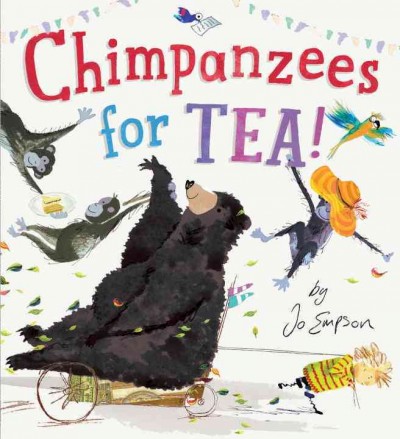
Remembering items from the story take a distinct turn for the silly in this book. I’m a sucker for readalouds where the kids get to yell at the characters for doing something wrong. In this case, the misremembered list builds to a nice chaotic frenzy over time. My favorite trope.
The Happiest Book Ever! by Bob Shea

If ever a humor award for picture book is created, Shea’s gonna sweep it every single year.
Hocus Pocus, It’s Fall! By Anne Sibley O’Brien
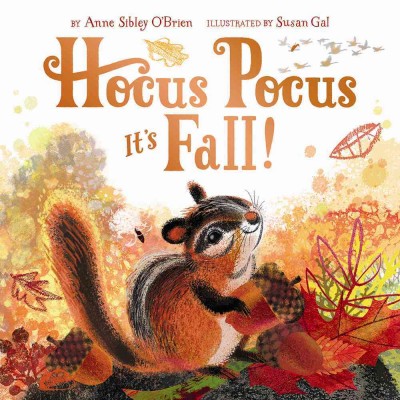
I know it’s seasonal, and usually I’d limit seasonal books to a different list, but I just loved this one. It has this little element where you open up a page to reveal something that works from a distance. Always important when reading to groups.
I Will Not Eat You by Adam Lehrhaupt, ill. Scott Magoon

You’ll pretty much have the kids hooked when you read and show them the title.
Is That Wise Pig? by Jan Thomas, Little Red and the Very Hungry Lion by Alex T. Smith

Jan Thomas could pretty much just repeat the same image over and over in a picture book and I’d find her work splendid. This is so funny and her art just pops. A kid in the next county could see it if you held it up. She’s also one of my storytime staples.
Leave Me Alone! by Vera Brosgol
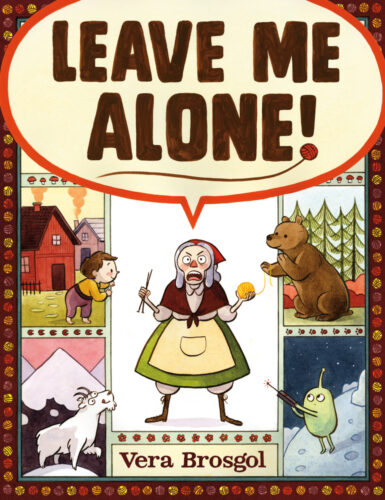
It’s perfect. No. Really. It is.
Max Speed by Stephen Shaskan
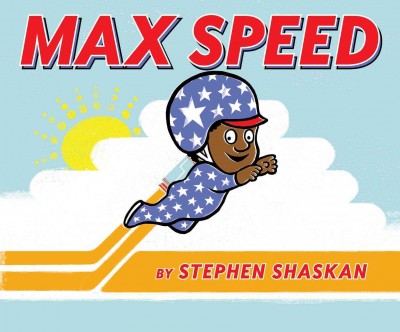
This was a huge hit at my kid’s daycare. I gave them a copy and they went gaga over it. And don’t worry. It has a happy ending.
One Day in the Eucalyptus Eucalyptus Tree by Daniel Bernstrom, ill. by Brendan Wenzel

To a certain extent this has been overshadowed by Wenzel’s other picture book this year They All Saw a Cat. That book has big readaloud potential in its own way, but if I were to have to pick between that and this one to read to a group, this would win every dang time. Hands down.
Panda Pants by Jacqueline Davies, ill. Sydney Hanson

I was trying to explain to my daughter today why pants are funny. What I should have done was just read her this book!
President Squid by Aaron Reynolds, ill. Sara Varon
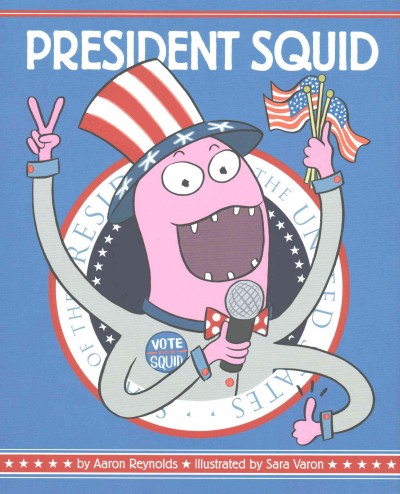
Read it. It’s cathartic. And don’t just do it once every four years either.
Quit Calling Me a Monster! by Jory John, ill. Bob Shea
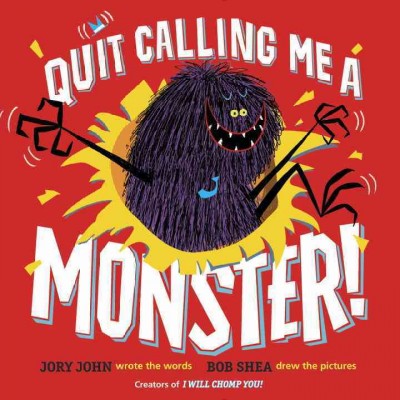
I MUCH prefer this over John & Shea’s previous outing I Will Chomp You. That book was fine. This one is sublime. I adore the hairy monster and his overly professional name.
That’s Not a Hippopotamus! by Juliette Maclver, ill. Sarah Davis
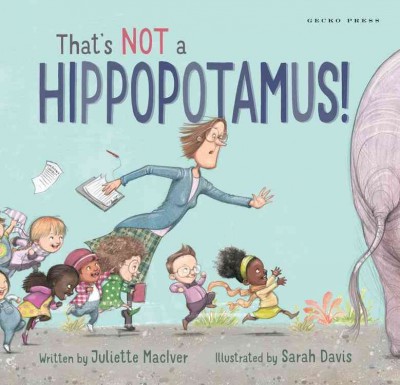
It’s frentic energy reminded me, just a little, of Hallie George’s Catch That Cookie! Had a GREAT ending too!
Interested in the other upcoming lists of this month? Here’s the schedule so that you can keep checking back:
December 1 – Board Books
December 2 – Board Book Adaptations
December 3 – Nursery Rhymes
December 4 – Picture Book Readalouds
December 5 – Rhyming Picture Books
December 6 – Alphabet Books
December 7 – Funny Picture Books
December 8 – Calde-Nots
December 9 – Picture Book Reprints
December 10 – Math Picture Books
December 11 – Bilingual Books
December 12 – International Imports
December 13 – Books with a Message
December 14 – Fabulous Photography
December 15 – Fairy Tales / Folktales
December 16 – Oddest Books of the Year
December 17 – Older Picture Books
December 18 – Easy Books
December 19 – Early Chapter Books
December 20 – Graphic Novels
December 21 – Poetry
December 22 – Fictionalized Nonfiction
December 23 – American History
December 24 – Science & Nature Books
December 25 – Transcendent Holiday Titles
December 26 – Unique Biographies
December 27 – Nonfiction Picture Books
December 28 – Nonfiction Chapter Books
December 29 – Novel Reprints
December 30 – Novels
December 31 – Picture Books

 It’s strange to think that Nursery Rhymes prove so difficult to round-up. I’ve done my best. After all, the art of the nursery rhyme is nothing to scoff at. There’s a reason they’ve kicked around all these centuries. Reading nursery rhymes to small children does wonders for brain development, to say nothing of the fact that they remain a cultural touchstone in our society. Here then is a bit of a mix. Some of these books play with the nursery rhyme format or redefine it. Others play it straight. I have no doubt, you’ll find something to love somewhere on this list.
It’s strange to think that Nursery Rhymes prove so difficult to round-up. I’ve done my best. After all, the art of the nursery rhyme is nothing to scoff at. There’s a reason they’ve kicked around all these centuries. Reading nursery rhymes to small children does wonders for brain development, to say nothing of the fact that they remain a cultural touchstone in our society. Here then is a bit of a mix. Some of these books play with the nursery rhyme format or redefine it. Others play it straight. I have no doubt, you’ll find something to love somewhere on this list.
2016 Nursery Rhymes
La Madre Goose: Nursery Rhymes for Los Ninos by Susan Middleton Elya, ill. Jana Martinez-Neal
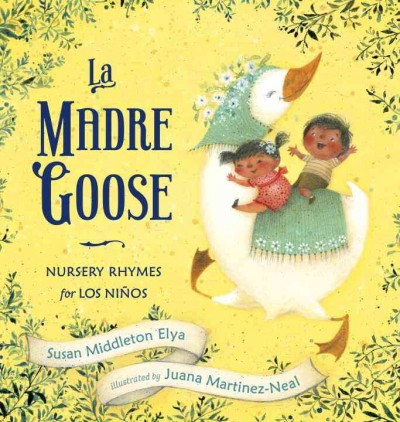
Now my kids are full-throated lovers of Elya’s book Fire! Fuego! Brave Bomberos, which may well be regarded as one of the best firefighter books in the pantheon of firefighter picture book literature’s history. In that book Elya effortlessly worked Spanish into the English text. She does a fair amount of that here as well and it lends itself to lovely, bouncy rhythms and some great art. I’m a fan.
Maybe Mother Goose by Esme Raji Codell, ill. Elisa Chavarri
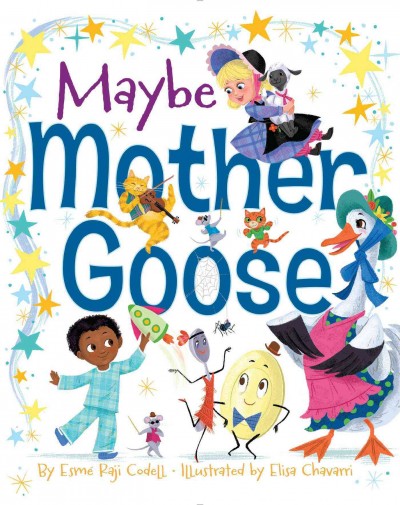
A book with true readaloud potential, particularly to big groups. It contains six nursery rhymes and then asks questions of the audience, allowing them the chance to say, “NOOOOOOO!!!!” in loud voices. Any book that does that has my instant love.
My Very First Mother Goose by Rosemary Wells

I’m slipping some reprints in here as well AND NO ONE CAN STOP ME!!! This is actually the 20th anniversary reprint of the Wells classic, and I’m all for it. This wouldn’t be a worthy nursery rhyme list without at least one true all-encompassing collection, after all.
Miss Muffet, Or What Came After by Marilyn Singer, ill. David Litchfield
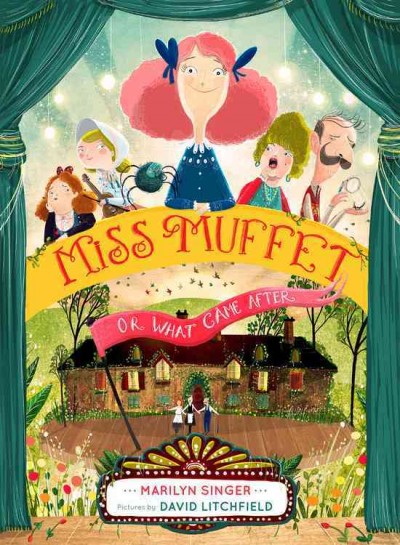
A truly ambitious outing. Singer’s book is told in rhyme but is truly meant to be read or performed or read to older kids. She slips a great many nursery rhyme characters into the tale, which is interesting because some of them are a bit lesser known. For example, the poem Cock-a-Doodle-Doo! plays an important role.
One, Two, Three Mother Goose by Iona Opie, ill. Rosemary Wells

Another Rosemary Wells, this time in service to the great Iona Opie. This book is in a board book format, and in my own personal experience I found some of the poems to work better than others with very young kids. That said, isn’t that always the case with good nursery rhymes?
The People of the Town: Nursery-Rhyme Friends for You and Me by Alan Marks
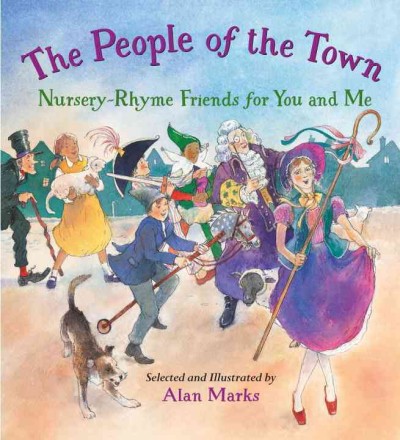
This would be the second book on this list that actually contains straight nursery rhymes. Twenty-six of them, to be precise. Interestingly they are all people-centric in this collection. An interesting choice.
Sing With Me! Action Songs Every Child Should Know by Naoko Stoop
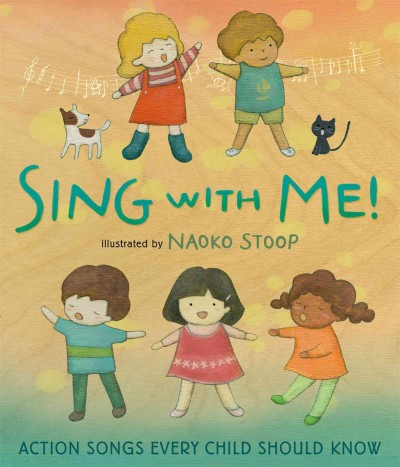
Okay, true, these are action rhymes and not nursery rhymes per se. But since the number of action rhyme books for kids released in a given year is even less than that of nursery rhymes, I’m going to let it slide on in. After all, it received stellar professional reviews and is just really cool to look at.
Interested in the other upcoming lists of this month? Here’s the schedule so that you can keep checking back:
December 1 – Board Books
December 2 – Board Book Adaptations
December 3 – Nursery Rhymes
December 4 – Picture Book Readalouds
December 5 – Rhyming Picture Books
December 6 – Alphabet Books
December 7 – Funny Picture Books
December 8 – Calde-Nots
December 9 – Picture Book Reprints
December 10 – Math Picture Books
December 11 – Bilingual Books
December 12 – International Imports
December 13 – Books with a Message
December 14 – Fabulous Photography
December 15 – Fairy Tales / Folktales
December 16 – Oddest Books of the Year
December 17 – Older Picture Books
December 18 – Easy Books
December 19 – Early Chapter Books
December 20 – Graphic Novels
December 21 – Poetry
December 22 – Fictionalized Nonfiction
December 23 – American History
December 24 – Science & Nature Books
December 25 – Transcendent Holiday Titles
December 26 – Unique Biographies
December 27 – Nonfiction Picture Books
December 28 – Nonfiction Chapter Books
December 29 – Novel Reprints
December 30 – Novels
December 31 – Picture Books

 So what do we mean when we say “Board Book Adaptations” exactly? Well, you’re probably familiar with the phenomenon of taking a picture book and chopping it down into a board book When this is done poorly the end product is strange and squished. The most egregious example of this might be the Cloudy With a Chance of Meatballs board book. With a long text appropriate for older readers, the type is tiny and even if you could read it you’d bore the toddler on your lap almost instantaneously.
So what do we mean when we say “Board Book Adaptations” exactly? Well, you’re probably familiar with the phenomenon of taking a picture book and chopping it down into a board book When this is done poorly the end product is strange and squished. The most egregious example of this might be the Cloudy With a Chance of Meatballs board book. With a long text appropriate for older readers, the type is tiny and even if you could read it you’d bore the toddler on your lap almost instantaneously.
That said, some board book adaptations from picture books are dead on the money. Today, we celebrate those adaptations in 2016 that really went above and beyond the call of duty.
2016 Board Book Adaptations
Black? White! Day? Night! by Laura Vaccaro Seeger

Actually, Ms. Seeger released a bunch of her books in a smaller, more board bookish format this year (Lemons Are Not Red, One Boy, and Walter Was Worried). My favorite, however, remains this one. A perfect little blending of lift-the-flap playfulness with some pretty stellar art.
Digger Man by Andrea Zimmerman & David Clemesha
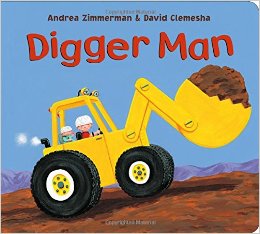
Actually, I have a bone to pick with this one You know that insidiously clever thing publishers do when they’ll put the book jackets of related titles on the back of the book you’re reading to a kid? And then the child will insist with all kinds of whines and moans and groans that they absolutely 100% MUST have the other books, and why aren’t we going to the library RIGHT NOW to get them? I’ve been there. And I’ve been there because of this book. This feels like it should have been a board book in the first place, but that’s okay. There is an advantage to looking at the other two books in the series (Train Man and Fire Engine Man). I now can draw the connections between the toys on the hero’s floor (including the rainbow astronaut) from book to book. Check it out. You’ll see what I mean.
Edible Colors/Edible Numbers by Jennifer Vogel Bass

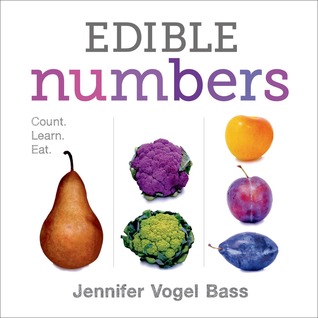
Utterly beautiful produce photographed against a white background. Lois Ehlert may have cornered the market on alphabetical produce, but clearly colors and numbers were still up for grabs. Great adaptations.
A Kiss Means I Love You by Kathryn Madeline Allen, photos by Eric Futran

Of all the books on this list, this was the one I was literally waiting for for years. A Kiss Means I Love You (an insipid title that belies the brilliance inside) came out originally in 2012 when I my daughter was a one-year-old. Naturally, the moment my second child grew old enough to appreciate books with thinner pages, that was when the board book version was released. It doesn’t matter. Run, don’t walk, to give it to a baby you know. And, while you’re at it, also by the companion board book (also out this year) Show Me Happy, by the same author/illustrator team.
Night Owl by Toni Yuly
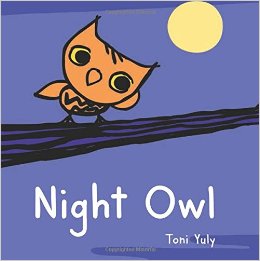
Yuly has a style that was born for board books. When Night Owl was first released I liked it just fine, but I think I actually prefer it in its current board book incarnation. It just makes good clean sense.
Numbers by John J. Reiss

I think this constitutes the oldest book on this list adapted to a board book format since the original came out in 1982. I’d love to know the sheer amount of work that went into this adaptation. Did they find the original art? Did they just get a book, scan it, and touch up the art’s brightness on a computer? No idea. Just a lovely product in the end.
Sing by Joe Raposo, ill. Tom Lichtenheld
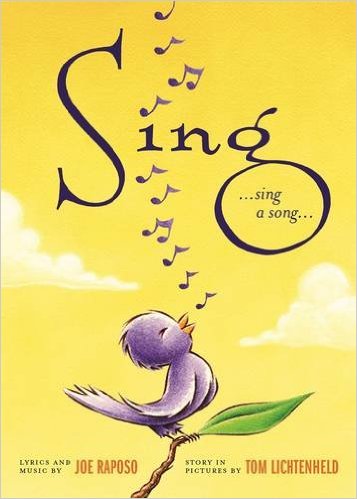
Of the books on this list, this is the one you can actually sing. It was always a little too short to truly work as a picture book. As a board book it’s a much better fit. La la la la la . . .
This Train by Paul Collicutt

I need to find the original picture book just to double check, but this book made for an ideal adaptation. The limited word count, incredibly bright and beautiful pictures, and sheer swath of different kinds of trains works. Be sure to also check out this year’s board book of This Plane, by Collicutt too.
Whose Shoes? A Shoe for Every Job by Stephen R. Swinburne
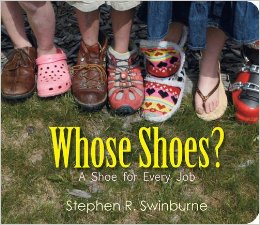
When Tana Hoban died she left a great big concept-book-gap in the marketplace. You can only reprint her books so many times before they get dated. That’s why I’m eternally grateful for books like this one. Shoes + occupations = a winning team.
Interested in the other upcoming lists of this month? Here’s the schedule so that you can keep checking back:
December 1 – Board Books
December 2 – Board Book Adaptations
December 3 – Nursery Rhymes
December 4 – Picture Book Readalouds
December 5 – Rhyming Picture Books
December 6 – Alphabet Books
December 7 – Funny Picture Books
December 8 – Calde-Nots
December 9 – Picture Book Reprints
December 10 – Math Picture Books
December 11 – Bilingual Books
December 12 – International Imports
December 13 – Books with a Message
December 14 – Fabulous Photography
December 15 – Fairy Tales / Folktales
December 16 – Oddest Books of the Year
December 17 – Older Picture Books
December 18 – Easy Books
December 19 – Early Chapter Books
December 20 – Graphic Novels
December 21 – Poetry
December 22 – Fictionalized Nonfiction
December 23 – American History
December 24 – Science & Nature Books
December 25 – Transcendent Holiday Titles
December 26 – Unique Biographies
December 27 – Nonfiction Picture Books
December 28 – Nonfiction Chapter Books
December 29 – Novel Reprints
December 30 – Novels
December 31 – Picture Books

THIS HOLIDAY SEASON, GIVE THE GIFT OF READING WITH CRICKET MEDIA’S “DOUBLE THE GIVING” CAMPAIGN
With Each Magazine Subscription Purchased, Cricket will Donate One to
a Child in Need in Partnership with Two Award-Winning Literacy Charities:
Libraries Without Borders and Parent-Child Home Program
Visit DoubletheGiving.com and Join a Charitable Movement
Guaranteed to Spark a Lifetime Love of Reading!
McLean, VA (November 7, 2016) — This holiday season, Cricket Media, and its award-winning family of ad-free kids magazines including BABYBUG, LADYBUG, SPIDER and CRICKET,invite gift-givers to double the reading and double the joy with their new “Double the Giving” Campaign. Throughout this November and December, any gift-giver purchasing an annual print subscription to one of four different Cricket publications will also deliver the gift of reading to a child in an underserved community through two award-winning, charitable partners: Libraries Without Borders and Parent-Child Home Program, both 2016 Library of Congress Literacy Award Winners.
Since 1973, the magazines in the Cricket family have sparked curiosity, inspired creativity and opened worlds of possibility in kids ages 3-16. Simply stack a year’s worth of one of Cricket’s magazines in front of a child, and they’ll see months of great stories and interactive features; adults will see a lifetime foundation of literacy and learning. But many children do not have access to these experiences, and Cricket wants to help.
Beginning today, generous gift-givers seeking to give the life-long gift of reading are invited to visit DoubletheGiving.com. There, they’ll have the opportunity to join a movement guaranteed to spark a lifetime love of reading through Cricket’s “Double the Giving” Campaign, Through the purchase of specially-discounted subscription bundles to BABYBUG (ages 6 mos.-3), LADYBUG (ages 3-6), SPIDER (ages 6-9) or CRICKET (ages 9-14) for $29.95 (regularly priced at $33.95), gift-givers can select between two charitable organizations to receive another 9-issue annual print subscription.
Libraries Without Borders supports community development in 20 countries around the world through the promotion of literacy. And, since 1965, the Parent-Child Home Program has been providing under-resourced families with the necessary skills and tools to help their children thrive in school and in life, developing school readiness in children with disadvantages by combining intensive home visits with weekly gifts of books and educational materials. Donated subscriptions through the “Buy One, Donate One” program will deliver BABYBUG, LADYBUG, SPIDER, AND CRICKET to families in more than 400 high-need, underserved communities throughout the United States, opening windows of possibility, creativity and wonder for thousands of children across the country.
“Our mission at Cricket is for our magazines to be read and enjoyed by as many families as possible,” said CEO Stephanie Sharis. “Spreading the joy of learning is at the heart of this campaign. And with the help of generous consumers, it’s our goal to reach 10,000 new kids in underserved communities across the country, making for a very bright holiday season for all”.
About Cricket Media
Cricket Media is an education media company that provides award-winning content on a safe and secure learning network for children, families and teachers across the world. Cricket Media’s 11 popular media brands for toddlers to teens include Babybug®, Ladybug®, Cricket™ and Cobblestone™. The Company’s innovative web-based K12 tools for school and home include the ePals community and virtual classroom for global collaboration as well as In2Books®, an e-Mentoring program that builds reading, writing and critical thinking skills. Cricket Media serves millions of teachers, students and parents in over 200 countries and territories through its platform and NeuPals, its joint venture with China’s leading IT services company Neusoft. Cricket Media also licenses its content and platform to top publishing and educational companies worldwide. For more information, please visit http://www.cricketmedia.com.
About Libraries Without Borders
Libraries Without Borders (LWB) is a 501(c)(3) non-profit, non-partisan organization devoted to facilitating the growth of libraries in the developing world. Currently active in 20 different countries, LWB recognizes that access to knowledge is a key factor in social and economic development. By facilitating the growth of libraries across the globe, LWB aims to provide the knowledge that is the engine of human development. Libraries Without Borders and Bibliothèques Sans Frontières (BSF) form an international network of organizations working together to promote knowledge-based development in under-served regions of the world.
About Parent-Child Home Program
The Parent-Child Home Program supports under-resourced families in preparing their young children for school success, by combining intensive home visits with weekly gifts of books and educational materials. Early-literacy specialists model good practices to educate parents about the importance of parent-child interaction, give them the tools needed to inculcate early literacy skills in their children, and encourage them to see themselves as active participants in their children’s educations. In this program, community-based early learning specialists visit participating families twice a week for two years. When families complete the program, the staff helps parents enroll their children in quality preschools or kindergartens. The program has been replicated in 400 high-need communities in 14 states and in Chile, Canada, Ireland and Bermuda.

 We kick off our 31 Days, 31 Lists at the lowest age level imaginable. Finding quality board books for babies and toddlers is a challenge. It’s not enough to simply have thick pages. You need to be able to engage the interest and attention of someone who is still developing their visual and auditory processing skills.
We kick off our 31 Days, 31 Lists at the lowest age level imaginable. Finding quality board books for babies and toddlers is a challenge. It’s not enough to simply have thick pages. You need to be able to engage the interest and attention of someone who is still developing their visual and auditory processing skills.
That said, there is a belief amongst some people that board books are for babies alone. Not so. As the mother of a very active 2-year-old I can attest that one is prone to sighs of relief when he is in a room alone with a board book as opposed to a picture book with oh-so-tearable pages.
On this list today I am including a range of board book ages, as well as books that fall under the board book banner because they are big and thick and have pop-up elements or tabs, but are not a standard board book size.
Think I missed something brilliant that came out this year? If it’s an adaptation from a longer picture book you’ll find that list here tomorrow. Otherwise, leave me a comment. I loved these, but I am not a committee.
2016 Board Books: For Babies
Blue and Other Colors with Henri Matisse
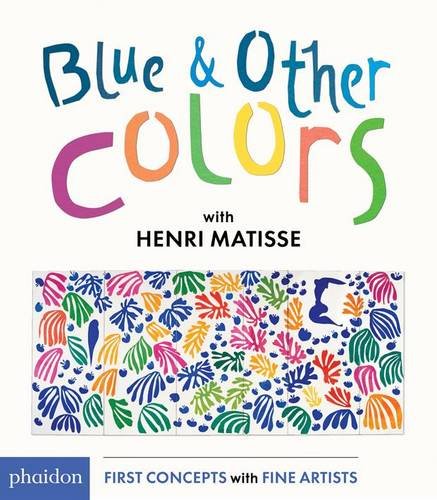
When I was a kid I had this pack of playing cards with famous pieces of art on each one. That was pretty cool. These days even the babies are getting colorful books from the masters. Some of these books don’t make a lick of sense, but this one does. Matisse’s bold blocks of color are just right for developing brains. A book that goes beyond its concept.
Hat On, Hat Off by Theo Heras, ill. Renne Benoit
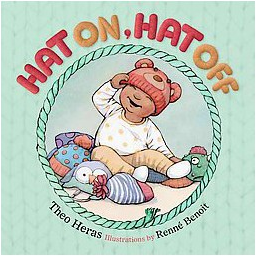
Babies like babies. And after encountering this adorable one, you’ll like them too.
Lions Roar (and others in the series) by Rebecca Glaser

I have no idea if this Amicus series has a name. All I know is that the books (which in 2016 included Monkeys Swing, Elephants Spray, Giraffes Stretch, and more) are a HUGE hit in my home. Animal sounds + full color photographs of those animals is a winning combination.
Noisy Baby Animals by Patricia Hegarty

What is the sound of a thousand librarians cursing my name en masse? Ah yes. There it is. I know it well. This book probably won’t be beloved to those with an MLIS degree when it’s IN the library (bit on the noisy side, it is) but I am all for books that cheat. Hey, man. If it takes crazy sounds to get a baby to love books, I say go for it. And you have to admit that Tiger Tales does it well.
Peek-a-boo by Ruth Musgrave

When in doubt, go with the photographs.
Stanley’s Colors by William Bee
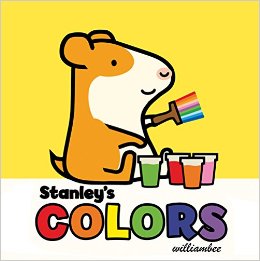
There were a couple Stanley board books released this year, but of those titles this was my favorite. Possibly because it also involved vehicles. A twofer!
The Wheels on the Bus by Yu-Hsuan Huang

Not many board books out this year allowed you to sing. This is one of the few, and while it is far too short for a truly satisfying read, it’s interactive, bouncy, and colorful. Sort of like a Bizzy Bear book with a song.
One, Two, Three Mother Goose by Iona Opie, ill. Rosemary Wells
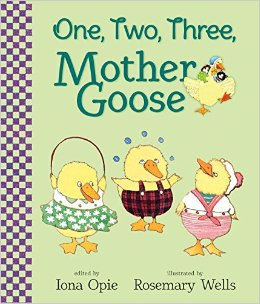
If it is important to you to introduce your children to nursery rhymes as soon as humanly possible, Wells is the way to go. Some folks may opt to wait on this until their children are toddlers, but either way this is an essential part of any kid’s library.
2016 Board Books: For Toddlers
Baby Loves: Aerospace Engineering!/Quarks! by Ruth Spiro, ill. Irene Chan
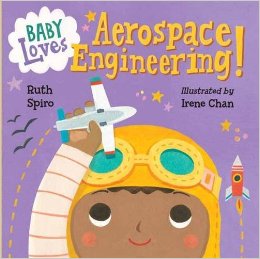
 Okay now. Before you start with the eye rolling, hear me out. Have you ever actually read these books? I know they look like a science-y version of Cozy Classics or other adult concepts siphoned down to board book formats. Go into them, though, and they’re clever. Just big concepts made palatable. The titles may have a shock effect, but the contents are worth considering. Plus we don’t have much in the way of science-related board books AT ALL these days.
Okay now. Before you start with the eye rolling, hear me out. Have you ever actually read these books? I know they look like a science-y version of Cozy Classics or other adult concepts siphoned down to board book formats. Go into them, though, and they’re clever. Just big concepts made palatable. The titles may have a shock effect, but the contents are worth considering. Plus we don’t have much in the way of science-related board books AT ALL these days.
Box by Min Flyte, ill. Rosalind Beardshaw

I gave a copy of this to my child’s daycare and they were quick to tell me that it was the hit of the room. It’s the size of a regular picture book but the contents and tabs make it quite certainly toddler fare.
Clive and His Babies by Jessica Spanyol
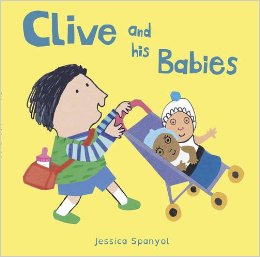
Awwww, yeah! Clive is my new favorite stereotype-busting preschooler. You play with those babies, Clive! Go, man, go!
Crocopotamus by Mary Murphy

Did they ever come up with a name for these books? Which is to say, the kind where you can flip the front and the back to come up with different combinations? Whatever the case, this one took a little getting used to, but once the kids grasped the concept they really ran with it!
Give and Take by Lucie Felix

The most ambitious board book on this list. I have little doubt that its pieces will disappear almost instantly upon a first read, but if you want to present someone with a board book that wows and impresses them, this is the one you pick.
I Dare You! by Nicole Maubert
 This turned out to be an EXCELLENT preschooler readaloud around Halloween. I think it truly won me over when I had to put my hand in a crazy creature’s mouth. Still get shudders just thinking about it.
This turned out to be an EXCELLENT preschooler readaloud around Halloween. I think it truly won me over when I had to put my hand in a crazy creature’s mouth. Still get shudders just thinking about it.
Little Chickies / Los Pollitos by Susie Jaramillo
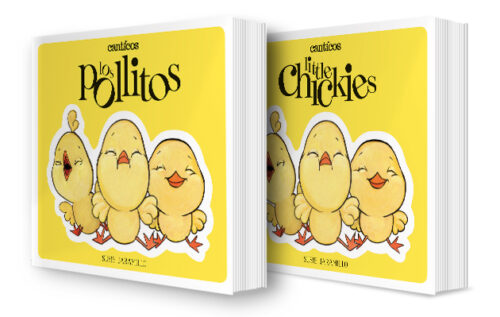 A bilingual, interactive, accordion board book?!? That’s like striking gold! This Spanish/English combo pack is extraordinarily rare, and then to find that it’s hugely engaging to kids one-on-one or in groups just tips it over the top.
A bilingual, interactive, accordion board book?!? That’s like striking gold! This Spanish/English combo pack is extraordinarily rare, and then to find that it’s hugely engaging to kids one-on-one or in groups just tips it over the top.
Look, Look Again by Agnese Baruzzi
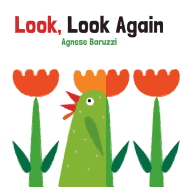
Plays with perceptions, assumptions, and predictions. Awfully pertinent stuff in 2016, wouldn’t you say? You can never teach it too early.
Love Is a Truck by Amy Novesky, ill. Sara Gillingham
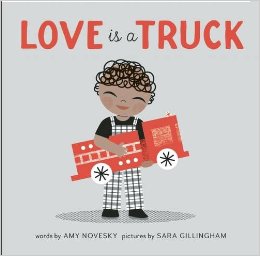
Love IS a truck! At least it is to my son, and this book is right on the money. There’s a companion title called Love Is a Tutu, but I’m Team Truck. It’s great to see Sara Gillingham bringing out a new book or two too.
Maisy’s Moon Landing by Lucy Cousins
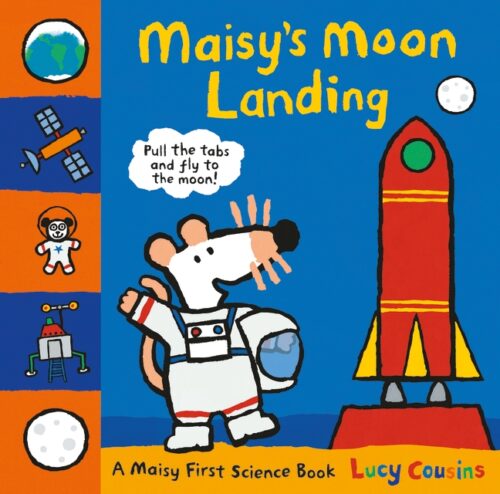
One of those picture/board book combos. Did I say science was lacking in the board book category? Maisy has always been on hand to battle that problem. This is one of the simplest moon landing stories I’ve ever seen, but I kind of adore it. Nothing wrong with a little Maisy when the book’s as well-constructed as this.
Music Is by Brandon Stosuy, ill. Amy Martin
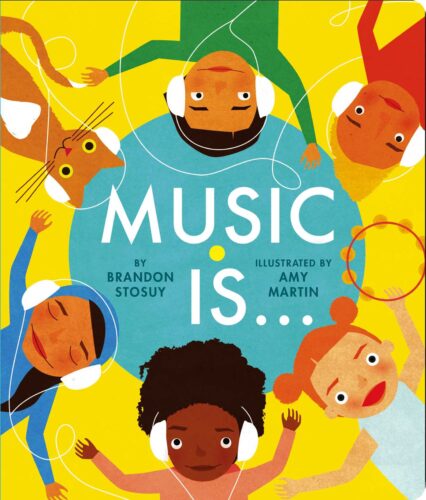
One of the trendier board books out there (check out those headphones if you don’t believe me) but that doesn’t mean it isn’t great.
My Heart Fills With Happiness by Monique Gray Smith, ill. Julie Flett

I don’t normally go in for the feel good board books out there, but this one’s special. Smith and Flett have gotten it right.
Once Upon a World: Cinderella by Chloe Perkins, ill. Sandra Equihua

There are a couple titles in this series so far. Of them, this is probably the most successful. I would have loved a bilingual or Spanish version as well. Perhaps something for the publisher to think about in the future, eh?
Peekaboo Pals: Opposites by Gareth Lucas

Again, there were a couple books released in the “Peekaboo Pals” series this year. Of them, this was the strongest. It came up with a couple opposite examples that I haven’t seen done to death before. No mean feat.
Shapes by John J. Reiss

I believe that this is a reprint, but I think it belongs here. Check out those vibrant hues! Now good luck getting to sleep tonight.
Tinyville Town: I’m a Firefighter / I’m a Veterinarian by Brian Biggs

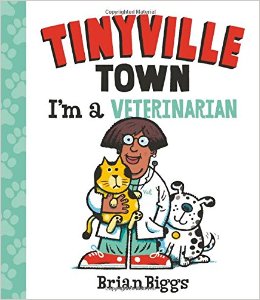
These are fabulous! They go through each occupation’s day from sunrise to sunset. Though, if I’m going to be honest here, I’m pretty much just biding my time until the next in the series comes out: Librarian.
To the Rescue by Kate Riggs, ill. Nate Williams
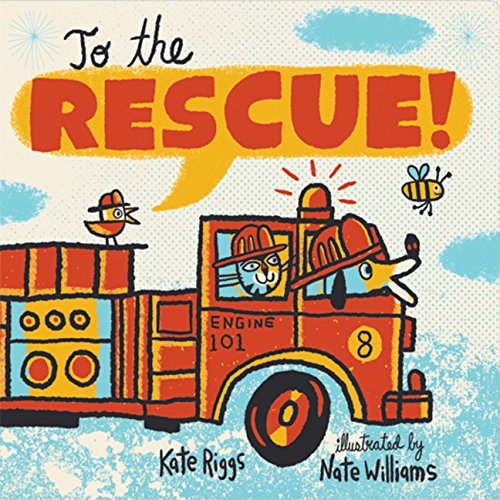
Really visually striking. Not just for those kids already into firetrucks ,that’s for sure.
We Sang You Home by Richard Van Camp, ill. Julie Flett
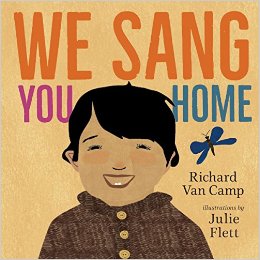
Flett’s having a good year! And like My Heart Fills With Happiness, this book features a cast of First Nations children.
Interested in the other upcoming lists of this month? Here’s the schedule so that you can keep checking back:
December 2 – Board Book Adaptations
December 3 – Nursery Rhymes
December 4 – Picture Book Readalouds
December 5 – Rhyming Picture Books
December 6 – Alphabet Books
December 7 – Funny Picture Books
December 8 – Calde-Nots
December 9 – Picture Book Reprints
December 10 – Math Picture Books
December 11 – Bilingual Books
December 12 – International Imports
December 13 – Books with a Message
December 14 – Fabulous Photography
December 15 – Fairy Tales / Folktales
December 16 – Oddest Books of the Year
December 17 – Older Picture Books
December 18 – Easy Books
December 19 – Early Chapter Books
December 20 – Graphic Novels
December 21 – Poetry
December 22 – Fictionalized Nonfiction
December 23 – American History
December 24 – Science & Nature Books
December 25 – Transcendent Holiday Titles
December 26 – Unique Biographies
December 27 – Nonfiction Picture Books
December 28 – Nonfiction Chapter Books
December 29 – Novel Reprints
December 30 – Novels
December 31 – Picture Books

The title of this post isn’t entirely accurate. I know perfectly well what’s coming. Tomorrow starts off a magnificent run of Best Books lists. Yes, starting December 1st I will begin running the 31 Days, 31 Lists streak. I even have a catchy visual to go with it! Check it out:

You’ll be seeing a lot more of it in the coming month.
The premise behind all this is simple. For each day in December I will run a “Best Of” list of some sort. The reason for this is that I’ve read so many books this year that it seems a shame that I only review roughly one a month. This will be a way of celebrating everything I’ve failed to properly praise. Also, some lists are more useful to folks than others, so why not provide a variety? Here’s the schedule:
December 1 – Board Books
December 2 – Board Book Adaptations
December 3 – Nursery Rhymes
December 4 – Picture Book Readalouds
December 5 – Rhyming Picture Books
December 6 – Alphabet Books
December 7 – Funny Picture Books
December 8 – Calde-Nots
December 9 – Picture Book Reprints
December 10 – Math Picture Books
December 11 – Bilingual Books
December 12 – International Imports
December 13 – Books with a Message
December 14 – Fabulous Photography
December 15 – Fairy Tales / Folktales
December 16 – Oddest Books of the Year
December 17 – Older Picture Books
December 18 – Easy Books
December 19 – Early Chapter Books
December 20 – Graphic Novels
December 21 – Poetry
December 22 – Fictionalized Nonfiction
December 23 – American History
December 24 – Science & Nature Books
December 25 – Transcendent Holiday Titles
December 26 – Unique Biographies
December 27 – Nonfiction Picture Books
December 28 – Nonfiction Chapter Books
December 29 – Novel Reprints
December 30 – Novels
December 31 – Picture Books
Now the caveat. I say I’ve read a lot of books for kids this year. This is not an untrue statement. However, I am no longer on NYPL’s 100 Books committee and I no longer have travel time to devote to books. That means that my knowledge of longer nonfiction and novels is very limited. I will strive to make it clear that those lists are limited only to what I have seen. And, of course, being only one person I can only vouch for what comes my way. There are definitely going to be gaps, but I refuse to include any book I haven’t read personally.
So get ready for an interesting test. How will it go? Will I be able to keep the pace? Will be choices be slapdash crazy?
Stay tuned . . .

With November coming to a close and the end of the year fast approaching, we are nearing the announcement of the 2017 Newbery / Caldecott Awards with every passing minute. This may be the perfect time to take a step back and think about those winners from years past. Some of them remain in our collective unconscious but a number of them have been unjustifiably forgotten. Today I am pleased to introduce a guest post from Fred Guida. He was kind enough to allow me the chance to feature his piece on one of the more prolific award winners of the past. Yet as the writer (not the illustrator) of numerous Caldecott Award winners, his is a too little lauded name.
Rediscovering Alvin Tresselt
by Fred Guida
As is the case in all branches of literature, good books, and even some great ones, go out of print all the time. And some authors, both good and great, have a way of receding into the background; not exactly forgotten, but no longer as prominent as they once were or deserve to be. In the context of children’s literature, the work of Alvin Tresselt is a glaring case in point, and, as such, his books cry out for rediscovery.
 Over the course of a career that spanned six decades, he wrote and/or adapted fifty-four books, primarily picture books, for children. Many won awards and high praise. His White Snow, Bright Snow (1947) is a Caldecott Medal winner, and Rain Drop Splash (1946) and Hide and Seek Fog (1965) are Caldecott Honor books. Numerous titles were translated into a wide range of foreign languages, and several were developed into audiovisual productions.
Over the course of a career that spanned six decades, he wrote and/or adapted fifty-four books, primarily picture books, for children. Many won awards and high praise. His White Snow, Bright Snow (1947) is a Caldecott Medal winner, and Rain Drop Splash (1946) and Hide and Seek Fog (1965) are Caldecott Honor books. Numerous titles were translated into a wide range of foreign languages, and several were developed into audiovisual productions.
It is also interesting to note that over the course of his prolific career he usually held down a “day job” related to children’s literature. He was the first managing editor of Humpty Dumpty’s Magazine, and eventually became vice president of Parents’ Magazine Press and editor-in-chief of its children’s publications. He also worked as an instructor, and ultimately Dean of Faculty, at the Institute of Children’s Literature.
Tresselt was born in 1916, in Passaic, New Jersey and, as a child, spent a short time on a farm, an experience that may well have planted a seed that eventually blossomed in his writing about nature for children. He later moved to New York City and worked in several design firms and department stores, including B. Altman & Co., where he was involved in display and copywriting. In 1949 he married artist and educator Blossom Budney, herself the author of several books for children. After living for many years in Connecticut, he retired to Vermont where he died in 2000.
His writing career began in the mid-1940s under the mentorship of the legendary Margaret Wise Brown, and under the influence of New York’s progressive Bureau of Educational Experiments, the forerunner of today’s Bank Street College of Education, which staunchly advocated for creative realism in children’s literature. He was also influenced by Brown’s close friend, illustrator Leonard Weisgard. He was in heady company and was, in a very real sense, a witness to the early years of the modern era of American picture book publishing. He was, in fact, part of it.
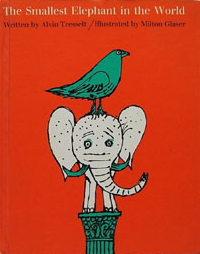 So what kind of books did Alvin Tresselt write? To begin with, there are a few interesting one-shots like The World in the Candy Egg (1967), a rare excursion into fantasy, and the delightfully cartoon-like The Smallest Elephant in the World (1959). However, the majority of his work can be divided into two main groups of roughly equal size.
So what kind of books did Alvin Tresselt write? To begin with, there are a few interesting one-shots like The World in the Candy Egg (1967), a rare excursion into fantasy, and the delightfully cartoon-like The Smallest Elephant in the World (1959). However, the majority of his work can be divided into two main groups of roughly equal size.
The first group is comprised of picture books that explain and celebrate various aspects of the world in which children live. In this context, he is often a “nature specialist,” ultimately a realist, and a pioneer in that genre alternately known as creative, narrative, or literary nonfiction. These are books that are heavily influenced by Bank Street’s famous here-and-now philosophy – i.e., books that are rooted in the real world, as opposed to the more traditional children’s world of fairy tales and fantasy.
And within this group, there is an overlapping subgroup of what might be termed philosophical forays into the heart of childhood. Timothy Robbins Climbs the Mountain (1960), The Wind and Peter (1948), What Did You Leave Behind? (1978), and How Far is Far? (1964) are such books. And I Saw the Sea Come In (1954), a book that is ostensibly about a day at the beach, celebrates the fact that all a child really needs to find enjoyment is a sense of wonder and an imagination.
One can also add another subgroup in which, primarily at the end of his career, he returned to six of his earlier books and released them with revised text and new illustrations. His goal was to freshen each title and make it more accessible and relevant to a new generation of readers. For example, in Wake Up, City! (1990), an admittedly dated cop on the beat is replaced by a pair of modern police officers, one of whom is an African-American woman.
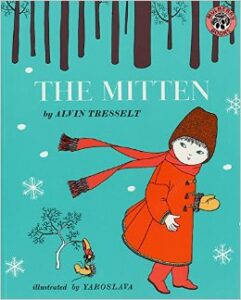 The second main group is comprised of his adaptations, primarily of stories and folk tales, most of which were published by Parents’ Magazine Press. A few, like Stories from the Bible (1971), originated in English. However, most were originally published in book form outside the United States: Germany, Ukraine, and Switzerland, but primarily Japan. Working with copy that had been translated into English, he adapted them for American children. And while they do not necessarily employ the kind of poetic prose found in his original books, they are nevertheless rich in atmosphere – and they tell wonderful tales, and tell them well. The most famous and successful of these books is his 1964 version of The Mitten, the first American picture book edition of this perennially popular tale.
The second main group is comprised of his adaptations, primarily of stories and folk tales, most of which were published by Parents’ Magazine Press. A few, like Stories from the Bible (1971), originated in English. However, most were originally published in book form outside the United States: Germany, Ukraine, and Switzerland, but primarily Japan. Working with copy that had been translated into English, he adapted them for American children. And while they do not necessarily employ the kind of poetic prose found in his original books, they are nevertheless rich in atmosphere – and they tell wonderful tales, and tell them well. The most famous and successful of these books is his 1964 version of The Mitten, the first American picture book edition of this perennially popular tale.
It is largely on the here-and-now picture books that Tresselt’s reputation rests. In short, they are noted for their gently poetic and lyrical prose, their rich atmosphere, emotion, and evocation of mood, and the almost subliminal manner in which they convey information – including factual information. As the biographical blurb in the revised edition of Wake Up, City! notes, “his books have awakened thousands of readers and listeners to the many small miracles of life.” And, to put a finer point on it, consider the promotional dust jacket blurb in the original edition of Sun Up (1949) which states that “children will linger over the pages and return to this book again and again – for it has transformed an incident of everyday life into a pastoral poem.” The same basic sentiment applies to many titles, whether rural or urban in setting.
Consider the very first words of his first book, Rain Drop Splash, written in 1946, which initiated a fruitful, nearly fifty-year publishing relationship with Lothrop, Lee & Shepard. These words clearly indicate an author who is acutely attuned to the sounds and rhythms of language:
 Drip drop splash,
Drip drop splash,
drip drop splash,
drip drop splash
went the rain all day.
(The book also reveals an author who is in touch with the rhythm and pulse of nature as it follows the progress of rain drops from puddle to pond to brook to lake to river and finally to the open sea. And along the way we are shown the effects of the water on all the living things that are touched by it.)
Indeed, his is a world rich in aural imagery, a world in which chipmunks chatter, snowflakes whisper quietly, the laughter of children sparkles, catbirds scold, and hay balers go gunka ka CHUNG, gunka ka CHUNG, gunka ka CHUNG.
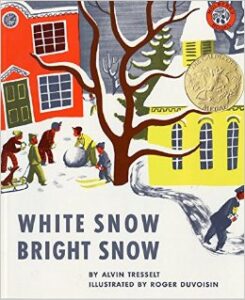 And it is a world equally rich in visual imagery. For example, there is White Snow, Bright Snow, the first of eighteen highly successful collaborations with illustrator Roger Duvoisin. In it we enter a world in which automobiles “looked like big fat raisins buried in snowdrifts,” and in which houses “crouched together, their windows peeking out from under great white eyebrows.”
And it is a world equally rich in visual imagery. For example, there is White Snow, Bright Snow, the first of eighteen highly successful collaborations with illustrator Roger Duvoisin. In it we enter a world in which automobiles “looked like big fat raisins buried in snowdrifts,” and in which houses “crouched together, their windows peeking out from under great white eyebrows.”
And as an indication of his genius for synthesizing aural and visual imagery into pure poetry, consider the closing words of Johnny Maple-Leaf (1948), a stunningly beautiful book that depicts the cycle of the seasons as told from the perspective of a maple leaf:
The bare branches whistled as the wind blew harder. He was cold and lonely. Where were the birds and the rabbits, the flowers and leaves that had lived with him all summer? Still the wind blew, and Johnny let go, sailing down, down, down …
The other leaves seemed to make room for him, and he wiggled his way in. Here it was warm and he wasn’t lonely. Gentle little snow flakes fell softly over him, and Johnny Maple-Leaf decided this was the best place in the whole world for him to be, and he went off to sleep.
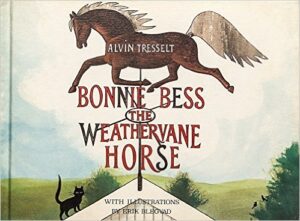 And as a not insignificant aside, it is interesting to note that several of his books contain an undercurrent of poignant meditation on the passage of time, and in so doing exhibit a wistful quality that cannot escape the attention of any reasonably sensitive adult. This is particularly true of Johnny Maple-Leaf, and also of Bonnie Bess the Weathervane Horse (1949).
And as a not insignificant aside, it is interesting to note that several of his books contain an undercurrent of poignant meditation on the passage of time, and in so doing exhibit a wistful quality that cannot escape the attention of any reasonably sensitive adult. This is particularly true of Johnny Maple-Leaf, and also of Bonnie Bess the Weathervane Horse (1949).
Alvin Tresselt was effectively a pioneer of poetic, lyrical, evocative, mood-rich prose for children. (His style has in fact been described as what might be termed “mood writing.”) Nevertheless, when one looks at the past sixty years or so of American picture book publishing, he has certainly had his share of competitors and imitators. However, one thing is certain: he perfected this style and took it further than anyone else. Simply put, and notwithstanding a debt in this area to Margaret Wise Brown, no one has ever done it better.
And as for the content, the “meat,” of his books, it has been observed that many appear to be simply a series of plotless and characterless vignettes or impressions that may be peppered with factual information. On the surface, there is a grain of truth here – and yet only up to a point. The real truth is that they are rich in atmosphere and emotion. And there is always underlying action, always a subtle story, always something to learn, always movement toward some quiet destination.
In a sense, many of his books are indeed abstractions – and yet they are, once again, always rooted in reality. And they do not simply parrot Bank Street dogma; they are original. Their language is simple yet not simplistic, and there is always a highly individual voice that speaks clearly and directly to readers and listeners of all ages. Even in books about rabbits and robins, they are never cloying or cute. They are honest. Never didactic or preachy. And while they do frequently educate and inform, they do not teach in the conventional sense of the word.
All of this suggests a very interesting body of work. However, the sad fact is that all but four of his books are out of print.* This is particularly disturbing in light of the fact that, as a practical matter, many of them can be broadly grouped under the umbrella of nonfiction. In this regard, as a way of addressing the current call for more nonfiction in schools and libraries, particularly within the context of the Common Core State Standards, it has been suggested that schools and libraries adopt more creative or narrative nonfiction. As such, is there not room for books that can, once again, introduce young children to the cycles of water and the seasons? Or to the realities of life in the country or in a big city? Or to how a rabbit lives? Or to the power of the wind? Or to the effects of a heavy fog. Or to the impact of beavers and decaying trees on ecosystems? And it must be noted once again that this dissemination of information is always handled in a very subtle, non-didactic manner. (It is also worth mentioning here that some of these titles may be relevant within the context of the life sciences component of the STEM initiative which stresses education in the areas of science, technology, engineering, and math.)
And what about his retelling of those foreign stories and folk tales? To put the matter bluntly, multiculturalism is an important part of the discussion concerning today’s children’s literature. Yet, with the obvious exception of The Mitten, these books are essentially forgotten.
So where do we go from here? Thankfully, most libraries usually have a few well-worn copies of various titles; occasionally, a particular library will have more. And while one can always turn gratefully to the treasures that are available through the interlibrary loan system, many titles are extremely difficult (if not impossible) to find in any given geographic area.
It is a most unfortunate situation. In response – and notwithstanding the realities and vicissitudes of the business of publishing books – one can only cry out that surely there must be a market for the work of an author with an almost fifty-year track record of success.
The process of bringing an out-of-print book back to life can be very difficult. The Lothrop, Lee & Shepard titles have made their way to Harper Collins. And Scholastic acquired Parents’ Magazine Press some time ago; this backlist includes some excellent originals as well as the foreign adaptations. Hopefully, some of these books will one day be given a chance to speak to a new generation. There’s not a bad book among them, and many are simply brilliant.
And so, toward this end, how about it lovers of great children’s literature? (A group which, of course, includes librarians, teachers, parents, and booksellers.) How about making a little noise? Can’t we all use a little more poetry in our lives? And, more importantly, don’t our children deserve it?
Fred Guida is a retired film studies instructor, and the author of A Christmas Carol and Its Adaptations: Dickens’s Story on Screen and Television. He also moonlighted for six years in the children’s department of his local Barnes & Noble.
*As of this writing, four Alvin Tresselt books are in print: White Snow, Bright Snow (1947); The Mitten (1964); Hide and Seek Fog (1965); and The Gift of the Tree (1992). The latter is a revised edition of The Dead Tree (1972).
Thank you, Fred, for this great piece. And thank you to the readers out there, that wanted to know more.

Steve Sheinkin is back with his beloved series! If you’re unfamiliar with it, Steve has a conversation with an author of books for kids or teens and then plucks from it the best parts. So in spite of the fact that he has a brand new book out in early 2017 (Undefeated: Jim Thorpe and the Carlisle Indian School Football Team) he still took time to give us this great discussion with Grace Lin. For the full list of interviews, see the links at the bottom of this post.
Enjoy!

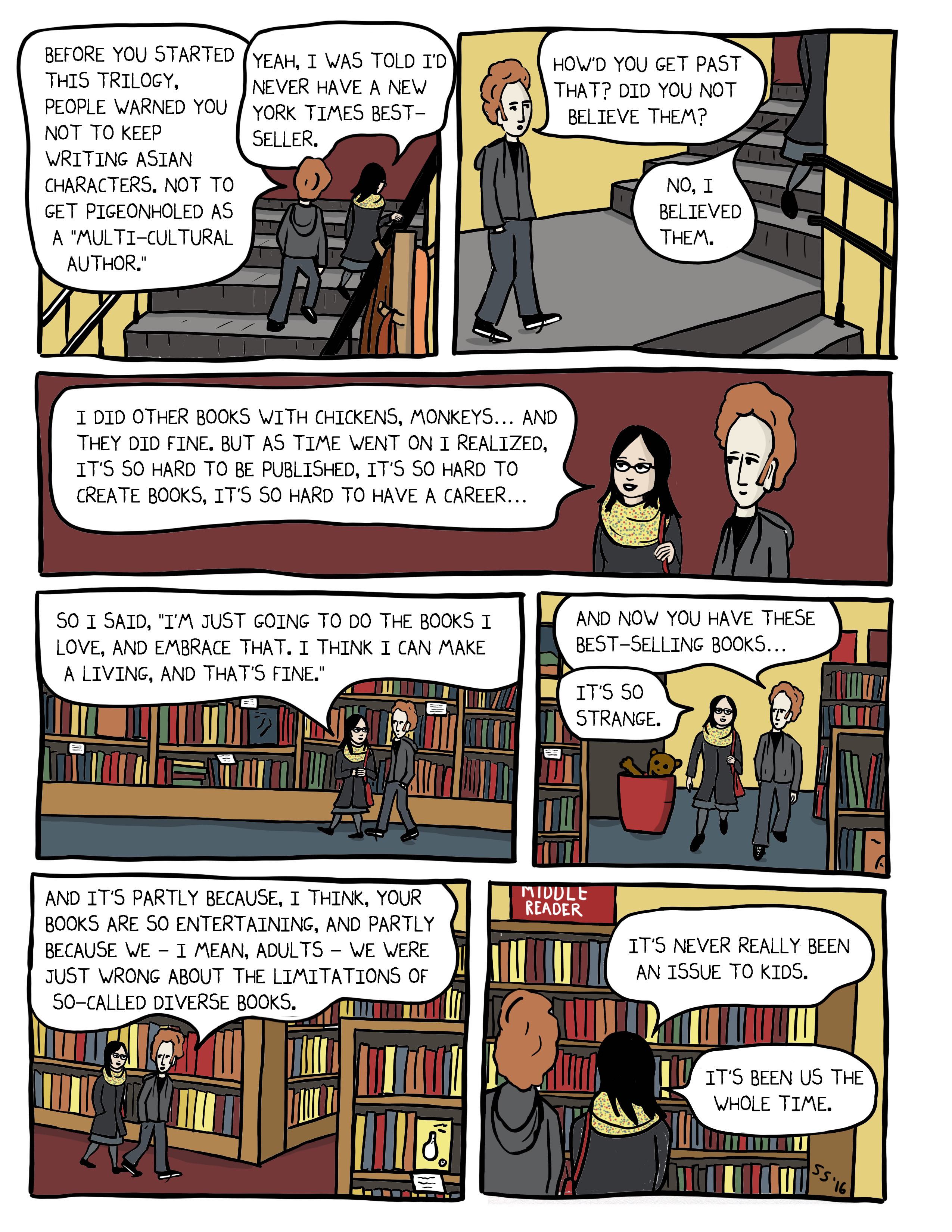
Catch up with the whole series!


By:
Betsy Bird,
on 11/26/2016
Blog:
A Fuse #8 Production
(
Login to Add to MyJacketFlap)
JacketFlap tags:
School Library Journal,
Videos,
illustrator interviews,
The Snowy Day,
Eric Rohmann,
Fantastic Beasts,
Video Sunday,
illustrator videos,
Ladybird and Friends,
Secrets of Story,
Boyz II Men,
Add a tag
Morning folks. I’ll start today with a video that contains some classy tunes. It’s my recent interview with Eric Rohmann about his new book GIANT SQUID. Delicious delicious giant squids. Sorry. This interview occurred on a day when I was half hoping the staff recording the interview would have a big steaming plate of calamari waiting for me. Twas not to be.
Britain’s doing that thing again. That thing where they throw a bunch of celebrities into a video for charity. I could recognize about 5.5 of them. You may have better luck in the end. How did Brittany get in there, by the way?
Hmmm. Boyz II Men plus The Snowy Day? Sure! What the heck. I’ll bite. This is for the new Amazon Prime Video holiday special. Oddly, it was the only clip from the special I was able to find online.
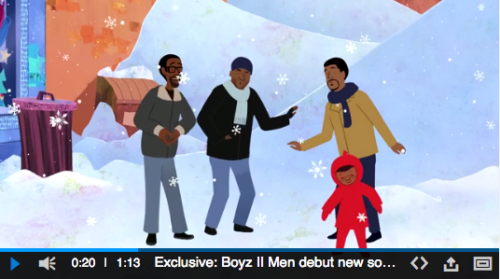
Oops! Did I not post KidLit TV’s live presentation of School Library Journal’s Best of 2016 list! Where are my manners?
And finally for the off-topic videos, Matt (the resident husband) had two more new one about the process of writing. First up, finding that odd moment of humanity in your characters . . .
Second up, fun with exposition!

Happy day after the day after Thanksgiving. Today I’m going to start you off on serious news story and that will pretty much set the tone for the day.
 I live in Evanston, IL. It’s home to Northwestern University and like a lot of college towns it’s a pretty liberal place. We sit just north of Chicago. We’re are ethnically and economically diverse. We like to think we live apart from the rest of the world in a little bubble. We don’t and it behooves us to remember that. Unfortunately, we can be reminded in rather horrible ways sometimes. Last Monday evening one of my librarians discovered that a number of books on Muslim topics had been defaced with hate speech, swastikas, and offensive comments. Seven were specific to Islam. One of them was Glenn Beck’s It Is About Islam. The community responded swiftly and wonderfully, but it’s become a very big story. I’m replacing the books now.
I live in Evanston, IL. It’s home to Northwestern University and like a lot of college towns it’s a pretty liberal place. We sit just north of Chicago. We’re are ethnically and economically diverse. We like to think we live apart from the rest of the world in a little bubble. We don’t and it behooves us to remember that. Unfortunately, we can be reminded in rather horrible ways sometimes. Last Monday evening one of my librarians discovered that a number of books on Muslim topics had been defaced with hate speech, swastikas, and offensive comments. Seven were specific to Islam. One of them was Glenn Beck’s It Is About Islam. The community responded swiftly and wonderfully, but it’s become a very big story. I’m replacing the books now.
It’s almost here! New York Public Library’s list of 100 children’s books is about to be officially released. Recently renamed 100 Best Books for Kids (an unfortunate moniker but NYPL is very keen on the word “Best” these days) it has an interesting selection. Odd choices too, like the fact that some of the nonfiction picture books in with the picture books section and some are in the nonfiction section. Some titles I haven’t heard of too, so I’m super excited to look into those. I did that list for something around 5-6 years, so my love for it is strong. Additionally, there’s a new list of 50 YA books on there as well. Win-win!
The Term “Graphic Novel” Has Had a Good Run. We Don’t Need It Anymore. I have no horse in this race. Glen fails to mention libraries in the piece, which I don’t think is his fault. He’s just ill-informed. Getting comics into the mainstream meant getting libraries on board, and the term “graphic novel” was very useful when it came to justifying such a book on our shelves. We still use it. Maybe it’s outdated. I dunno. I could go any which way. Still, until comics are used regularly in schools without massive quantities of eyebrow raising, I’ll not believe that comics have “arrived” quite yet.
The Undies are here! The Undies are here! If you haven’t voted over at 100 Scope Notes for the best case cover of a picture book in 2016, now is the time.
691. That’s how many children’s authors and illustrators signed The Brown Bookshelf’s Declaration in Support of Children. In it, it states, “we will create stories that offer authentic and recognizable reflections of themselves, as well as relatable insight into experiences which on the surface appear markedly different.” On the librarian side of the equation, bloggers like Roxanne Feldmann have published things like A Commitment to Social Justices and Compassion. In the comment section Bob Kanegis posted the 1955 dedication written by the United Nations Women’s Guild in their book Ride With the Sun: An Anthology of Folk Tales and Stories from the United Nations. It read:
The Children’s Charter
“There shall be peace on earth; but not until
Each child shall daily eat his fill;
Go warmly clad against the winter wind
And learn his lessons with a tranquil mind.
And thus released from hunger, fear, and need
Regardless of his color, race or creed,
Look upwards, smiling to the skies, His faith in man reflected in his eyes.”
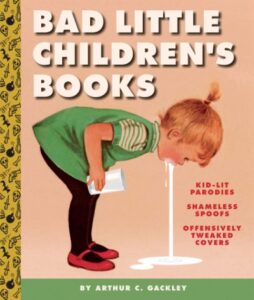 Related. A not-really-a-children’s-book children’s book is coming out from Abrams called Bad Little Children’s Books by Arthur C. Gackley. You’ve seen this kind of thing online before. They take Little Golden Book styled illustrations and covers and then put some snarky comment with them. This just collects a whole bunch of them. No doubt some of you will receive it this holiday seasons from relatives who think, “You like children’s books therefore you will find this hilarious.” And it wouldn’t even be worth mentioning except for one cover in there that sort of moves it from mildly amusing to not amusing at all. One of the parody covers is called Happy Burkaday, Timmy. Accompanying it is a picture of a little girl in a burka holding a bomb. So. That. Now you know. Thanks to Sharon Levin for the info.
Related. A not-really-a-children’s-book children’s book is coming out from Abrams called Bad Little Children’s Books by Arthur C. Gackley. You’ve seen this kind of thing online before. They take Little Golden Book styled illustrations and covers and then put some snarky comment with them. This just collects a whole bunch of them. No doubt some of you will receive it this holiday seasons from relatives who think, “You like children’s books therefore you will find this hilarious.” And it wouldn’t even be worth mentioning except for one cover in there that sort of moves it from mildly amusing to not amusing at all. One of the parody covers is called Happy Burkaday, Timmy. Accompanying it is a picture of a little girl in a burka holding a bomb. So. That. Now you know. Thanks to Sharon Levin for the info.
Let us turn our eyes to happier news. When the Wichita, Kansas chapter of Black Lives Matter and the Wichita Police Department held a mutual cookout, this captured the attention of the publisher Tanglewood. So moved, they decided to partner with libraries in some fashion. They donated 250 copies of The Kissing Hand to libraries that agreed to host an event in a community where gun violence had occurred. Then library partners were encouraged to work with a local chapter of Black Lives Matter (or similar organization) and the local law enforcement so both groups would have an equal part in delivering the donated books into the community. “Library partners were encouraged to work with a local chapter of Black Lives Matter (or similar organization) and the local law enforcement so both groups would have an equal part in delivering the donated books into the community.” Curious? More information here.
Vicky Smith recently alerted us to an interesting topic. While at the Maine Library Association conference she attended a workshop about the, “critlib movement in Maine. If you’re not familiar with critlib, it’s an attempt to marry critical race theory with librarianship in a pretty fascinating way. It encourages librarians to examine the ways the discipline privileges the dominant culture – for instance, Library of Congress cataloging places queer topics, consensual kink, and child sexual predation in the same conceptual bucket.” FYI.
Daily Image:
I couldn’t say it better than Cameron Suey did. “Damn, Aesop is subtweeting America, hard.”


Ending on a preposition and regretting nothing.
Here are the 2017 books I’ve seen that I’ve found positively delightful. These are all completely and utterly worthy. Put them on your To Be Read list today:
Baby’s First Words by Christiane Engel
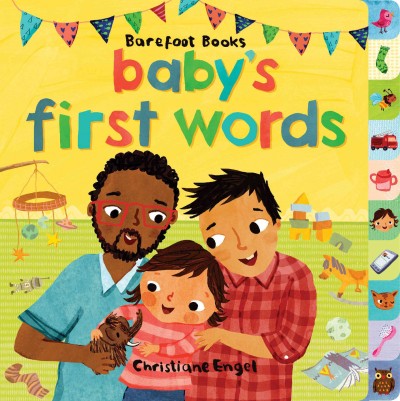
I like a good book for the little littles where the fact that a kid has two dads is part of the equation but not the focus. Additionally, there’s a stay-at-home dad here that’s awesome.
Home and Dry by Sarah L. Smith

A peculiar little book, but I was very fond of its love of all things soggy.
Mrs. White Rabbit by Giles Bachelet
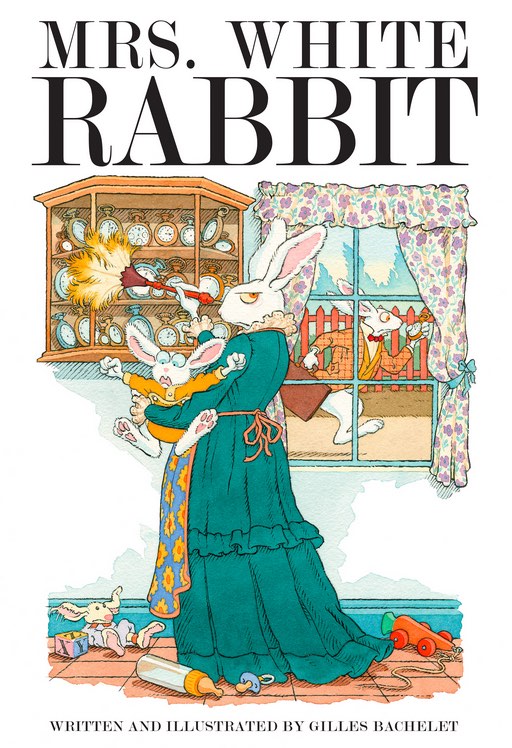 It is French. It is funny. You will enjoy it. Particularly the Alice in Wonderland in-jokes.
It is French. It is funny. You will enjoy it. Particularly the Alice in Wonderland in-jokes.
My Beautiful Birds by Suzanne Del Rizzo

A Syrian refugee picture book done in an entirely different medium – clay!
Prince Ribbit by Jonathan Emmett, ill. Poly Bernatene

Look. Any book that teaches kids to read everything critically is a necessary purchase in my book. Plus this is from the guys that brought us The Princess and the Pig, so that’s awesome right there.
Rabbit Magic by Meg McLaren
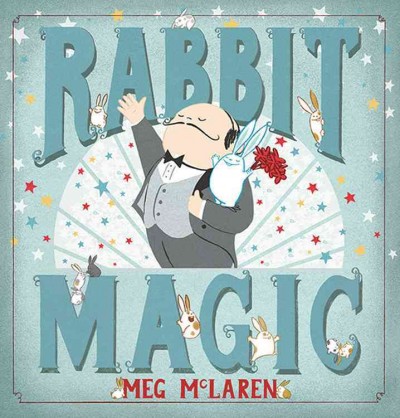
Books with tons of tiny details hidden within the pages are easy sells. I love the delicacy of the art here.
There Might Be Lobsters by Carolyn Crimi, ill. Laurel Molk

At first it just looks like a story about a dog overcoming fears, but the text reads aloud particularly well.
Tony by Ed Galing, ill. Erin E. Stead

I won’t! I won’t fall in love with this adapted poem about a boy and his love for the milkman’s horse! I won’t, I say! I . . . oh, darn it. Too late.
The Unexpected Love Story of Alfred Fiddleduckling by Timothy Basil Ering
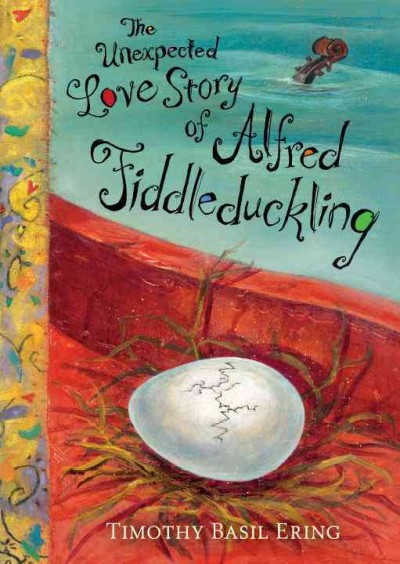
Ering tends to write longer picture books. This was has more heart in its little finger than most books have in their whole bodies.
Waiting for Pumpsie by Barry Wittenstein, ill. London Ladd
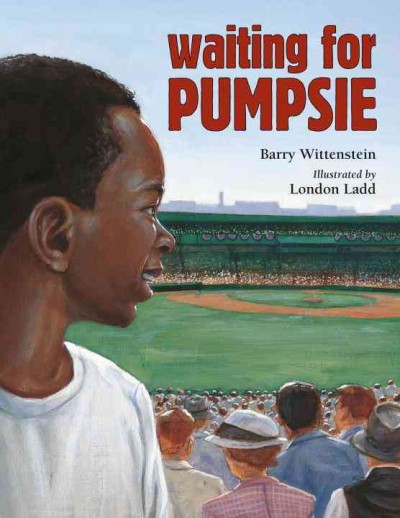
Kids could easily get the impression that after Jackie Robinson broke the color barrier it was smooth sailing for African-Americans in baseball. This book shoots down that myth elegantly and well.
When the Rain Comes by Alma Fullerton, ill. Kim La Fave
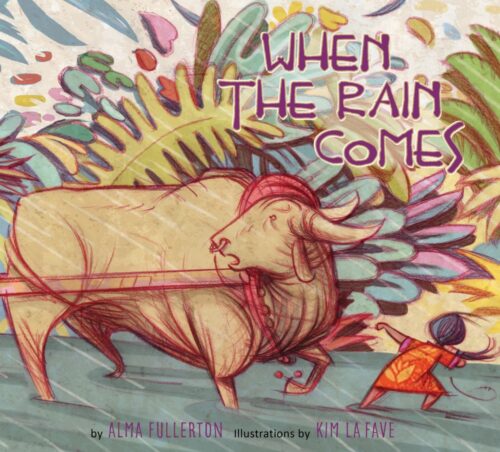
Remarkably dramatic for something so short.
XO OX by Adam Rex, ill. Scott Campbell
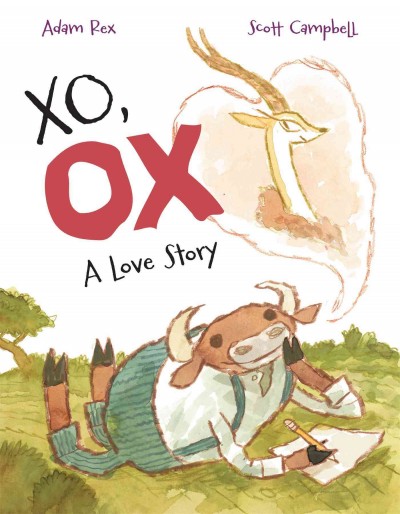
The return of Scott Campbell! The pairing of Adam Rex! And I’m calling it now: The most fabulous romantic pairing of 2017.

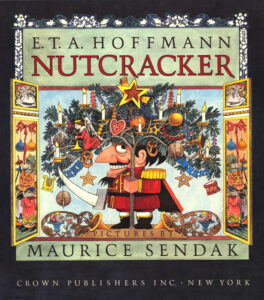 It sort of feels like someone took a starting pistol and called out to the universe, “Nutcracker picture books! On your mark . . . get set . . . . GO!” And off they went!
It sort of feels like someone took a starting pistol and called out to the universe, “Nutcracker picture books! On your mark . . . get set . . . . GO!” And off they went!
2016, for whatever reason, has turned out to be a VERY Nutcracker heavy year. If you are unaware or only vaguely familiar with what The Nutcracker is, I will sum up. In 1816 Prussian Romantic author E.T.A. Hoffman wrote an odd little children’s story called The Nutcracker and the Mouse King. It was this wild bit of imagining about a girl who receives a nutcracker from her uncle and the fantastical story that ensues. There’s even a story within a story, which concerns the tale of the Princess Pirlipat and the nut she had to eat to break a spell. It’s good and trippy. There was even a version of it illustrated by Maurice Sendak.
In time this story was adapted by Alexander Dumas into merely The Nutcracker. And from that tale we get the two-act balled choreographed by Marius Petipa and Lev Ivanov with a score by Tchaikovsky.
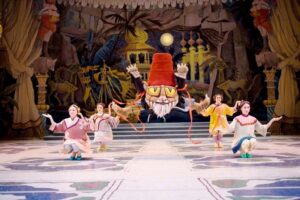 For a long time the ballet was done exactly the same way every year. Then people started to get creative. In 1983, Maurice Sendak (who had four years before adapted Where the Wild Things Are to the stage) designed the set for the Pacific Northwestern Ballet’s production of Nutcracker. It was a massive hit partly, as Maria Popova puts it, because it embraced, “Hoffmann’s essential weirdness”. Looking at the art Sendak did for the accompanying book, one really wonders why he never illustrated Struwwelpeter at any point in his career. But I digress.
For a long time the ballet was done exactly the same way every year. Then people started to get creative. In 1983, Maurice Sendak (who had four years before adapted Where the Wild Things Are to the stage) designed the set for the Pacific Northwestern Ballet’s production of Nutcracker. It was a massive hit partly, as Maria Popova puts it, because it embraced, “Hoffmann’s essential weirdness”. Looking at the art Sendak did for the accompanying book, one really wonders why he never illustrated Struwwelpeter at any point in his career. But I digress.
The Sendak production ran with the Pacific Northwestern Ballet until 2014 when it finally ended its run. Weep not, little children, if you feel you might have missed a chance to see a true children’s book master’s hand on a Nutcracker production. I come with tidings of great joy. Here in Chicago the Joffrey Ballet is presenting from December 10th-30th a production of The Nutcracker choreographed by Christopher Wheeldon, with puppets by Basil Twist and costumes and sets by Julian Crouch and our very own Brian Selznick. Marvelous, no? The show will this time be set during Chicago’s 1893 World’s Fair. Just bounce that thought around your noggin for a while.
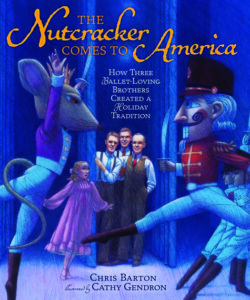 On the book side of things, stories about the Nutcracker are abundant. Last year we saw a couple come out, as well as a nice behind-the-scenes story by Chris Barton called The Nutcracker Comes to America. That may well be the only nonfiction title related to The Nutcracker you’ll find on your shelves, by the way.
On the book side of things, stories about the Nutcracker are abundant. Last year we saw a couple come out, as well as a nice behind-the-scenes story by Chris Barton called The Nutcracker Comes to America. That may well be the only nonfiction title related to The Nutcracker you’ll find on your shelves, by the way.
This year Nutcrackers have multiplied like so many Mouse King heads. I have found six for starters. Yet for all that they’re now common, writing this book is an incredibly difficult affair. The struggle each one of these books is figuring out how to tell a story that is both familiar to those kids who are either in the ballet or have seen it, and also has some relation to the original source material. To put it plainly, there have been mixed results.
The Nutcracker by Grace Maccarone, ill. Celia Chauffrey
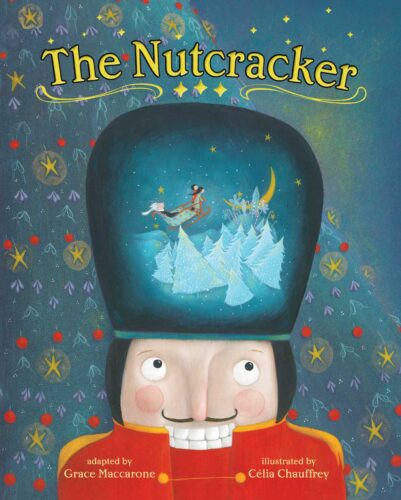
This is one of those books that certainly feels as though it was created to appeal primarily to those kids that get to act in a production of The Nutcracker as party guests and mice. The entire trip to the Land of Sweets is kept incredibly short. All told it’s a pretty rote retelling of the ballet specifically. Perfectly decent but not a top pick.
The Nutcracker by the New York City Ballet, ill. Valeria Docampo

Apparently an entire ballet company is capable of writing a book together. Here the fact that the show IS a ballet is never forgotten (the cover makes that much clear). Yet the name of our heroine isn’t Clara, as most productions of The Nutcracker name her, but Marie. That’s her name in the original Hoffman book! Yet the book itself acts as a younger introduction for kids to the show. The kind of title you’d read to a five-year-old who was about to go and see their first performance.
The Nutcracker by Kate Davies, ill. Niroot Puttapipat
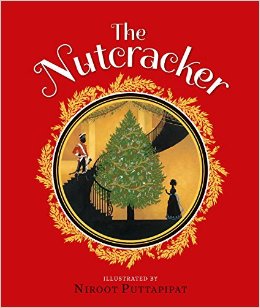
Just a quick note here. Remember how I said that in the original Hoffman story there was an odd little subplot involving a character with the name Princess Pirlipat? How likely is it that a Puttapipat would illustrate a book that originally contained a Pirlipat? The editing gods work in mysterious ways. This is one of the lovelier Nutcrackers out this year and for good reason. The silhouettes are delicate and delightful and the small pop-up details even nicer. Both the original Hoffman and the subsequent Dumas stories have been combined here to try and bridge the gap between ballet and text.
The Nutcracker by E.T.A. Hoffman, ill. Lisbeth Zwerger
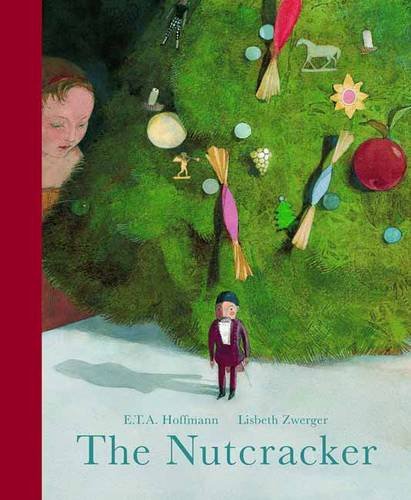
It’s not entirely fair to include this since this is technically a reprint, but the original has been unavailable for years. This is Hoffman’s original story but instead of Sendak’s art you have Zwerger’s. She doesn’t necessarily tap into the oddities of the text, but she has the dreamlike aspects down pat. A lovely one.
The Nutcracker and the Mouse King, retold by Renate Raecke, ill. Yana Sedova

I think that when it comes to the story and the mix of text and image, this may well be the most successful. Like the Puttapipat version it does a good job of building a bridge between the ballet and the original story. It also, as you can see here, is has some of the best art. This is my own personal pick of the lot.
E.T.A. Hoffman’s The Nutcracker by Jack Wang and Holman Wang
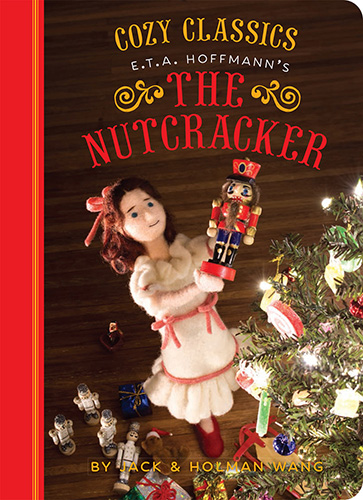
Aww. The latest from Cozy Classics. I couldn’t finish this post without paying tribute to this one. If you know a kid in a production of this show, just get them this book. It’s quick. It’s cute. And it does a darn good job of showing a ballet slipper in flight in felt. And what more, I ask you, do you really and truly need in this life but that?


By:
Betsy Bird,
on 11/17/2016
Blog:
A Fuse #8 Production
(
Login to Add to MyJacketFlap)
JacketFlap tags:
middle grade graphic novels,
Best Books of 2016,
2016 reviews,
Reviews 2016,
2017 Caldecott contenders,
2016 graphic novels,
2016 middle grade graphic novels,
Reviews,
graphic novels,
Matt Phelan,
Best Books,
Candlewick,
Add a tag
 Snow White: A Graphic Novel
Snow White: A Graphic Novel
By Matt Phelan
Candlewick Press
$19.99
ISBN: 978-0-7636-7233-1
Ages 9-12
On shelves now
I’d have said it couldn’t be done. The Snow White fairytale has been told and retold and overdone to death until there’s not much left to do but forget about it entirely. Not that every graphic novel out there has to be based on an original idea. And not that the world is fed up with fairytales now (it isn’t). But when I heard about Matt Phelan’s Snow White: A Graphic Novel I was willing to give it a chance simply because I trusted its creator and not its material. The crazy thing is that even before I picked it up, it threw me for a loop. I heard that the story was recast in 1920s/ early-1930s Depression-era New York City. For longer than I’d care to admit I just sort of sat there, wracking my brain and trying desperately to remember anything I’d ever seen that was similar. I’ve seen fairytales set during the Depression before, but never Snow White. Then I picked the book up and was struck immediately by how beautiful it was. Finally I read through it and almost every element clicked into place like the gears of a clock. I know Matt Phelan has won a Scott O’Dell Award for The Storm in the Barn and I know his books get far and wide acclaim. Forget all that. This book is his piece de resistance. A bit of fairytale telling, to lure in the kids, and a whole whopping dollop of cinematic noir, deft storytelling, and clever creation, all set against a white, wintery backdrop.
The hardened detective thinks he’s seen it all, but that was before he encountered the corpse in the window of a department store, laid out like she was sleeping. No one could account for her. No one except maybe the boy keeping watch from across the street. When the detective asks for the story he doesn’t get what he wants, but we, the readers, do. Back in time we zip to when a little girl lost her mother to illness and later her father fell desperately in love with a dancer widely proclaimed to be the “Queen of the Follies.” Sent away to a boarding school, the girl returns years later when her father has died and his will leaves all his money in a trust to Snow. Blinded by rage, the stepmother (who is not innocent in her husband’s death) calls in a favor with a former stagehand to do away with her pretty impediment, but he can’t do the deed. What follows is a gripping tale of the seven street kids that take Snow under their wing (or is it the other way around?), some stage make-up, a syringe, an apple, and an ending so sweet you could have gotten it out of a fairytale.
 Let’s get back to this notion I have that the idea of setting Snow White during the Depression in New York is original. It honestly goes above and beyond the era. I could swear I’d never read or seen a version where the seven dwarfs were seven street kids. Or where the evil stepmother was a star of the Ziegfeld Follies. Snow’s run from Mr. Hunt is through Central Park through various shantytowns and he presents the stepmother with a pig’s heart procured at a butcher. Even making her glass coffin a window at Macy’s, or the magic mirror an insidious ticker tape, feels original and perfectly in keeping with the setting. You begin to wonder how no one else has ever thought to do this before.
Let’s get back to this notion I have that the idea of setting Snow White during the Depression in New York is original. It honestly goes above and beyond the era. I could swear I’d never read or seen a version where the seven dwarfs were seven street kids. Or where the evil stepmother was a star of the Ziegfeld Follies. Snow’s run from Mr. Hunt is through Central Park through various shantytowns and he presents the stepmother with a pig’s heart procured at a butcher. Even making her glass coffin a window at Macy’s, or the magic mirror an insidious ticker tape, feels original and perfectly in keeping with the setting. You begin to wonder how no one else has ever thought to do this before.
You’d also be forgiven for reading the book, walking away, giving it a year, and then remembering it as wordless. It isn’t, but Phelan’s choosy with his wordplay this time. Always a fan of silent sequences, I was struck by the times we do see words. Whether it’s the instructions on the ticker tape (a case could easily be made that these instructions are entirely in the increasingly deranged step-mother’s mind), Snow’s speech about how snow beautifies everything, or the moment when each one of the boys tells her his name, Phelan’s judiciousness makes the book powerful time and time again. Can you imagine what it would have felt like if there had been an omniscient narrator? The skin on the back of my neck shudders at the thought.
For all that the words are few and far between, you often get a very good sense of the characters anyway. Snow’s a little bit Maria Von Trapp and a little bit Mary Poppins to the boys. I would have liked Phelan to give her a bit more agency than, say, Disney did. For example, when her step-mother informs her, after the reading of her father’s will, that her old room is no longer her own, I initially misread Snow’s response to be that she was going out to find a new home on her own. Instead, she’s just going for a walk and gets tracked down by Mr. Hunt in the process. It felt like a missed beat, but not something that sinks the ship. Contrast that with the evil stepmother. Without ever being graphic about it, not even once, this lady just exudes sex. It’s kind of hard to explain. There’s that moment when the old stagehand remembers when he once turned his own body into a step stool so that she could make her grand entrance during a show. There’s also her first entrance in the Follies, fully clothed but so luscious you can understand why Snow’s father would fall for her. The book toys with the notion that the man is bewitched rather than acting of his own accord, but it never gives you an answer to that question one way or another.
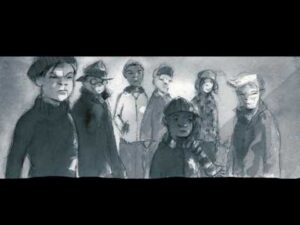 Lest we forget, the city itself is also a character. Having lived in NYC for eleven years, I’ve always been very touchy about how it’s portrayed in books for kids. When contemporary books are filled with alleyways it makes me mighty suspicious. Old timey fare gets a pass, though. Clever too of Phelan to set the book during the winter months. As Snow says at one point, “snow covers everything and makes the entire world beautiful . . . This city is beautiful, too. It has its own magic.” So we get Art Deco interiors, and snow covered city tops seen out of huge plate glass windows. We get theaters full of gilt and splendor and the poverty of Hoovervilles in the park, burning trashcans and all. It felt good. It felt right. It felt authentic. I could live there again.
Lest we forget, the city itself is also a character. Having lived in NYC for eleven years, I’ve always been very touchy about how it’s portrayed in books for kids. When contemporary books are filled with alleyways it makes me mighty suspicious. Old timey fare gets a pass, though. Clever too of Phelan to set the book during the winter months. As Snow says at one point, “snow covers everything and makes the entire world beautiful . . . This city is beautiful, too. It has its own magic.” So we get Art Deco interiors, and snow covered city tops seen out of huge plate glass windows. We get theaters full of gilt and splendor and the poverty of Hoovervilles in the park, burning trashcans and all. It felt good. It felt right. It felt authentic. I could live there again.
We live in a blessed time for graphic novels. With the recent win of what may well be the first graphic novel to win a National Book Award, they are respected, flourishing, and widely read. Yet for all that, the graphic novels written for children are not always particularly beautiful to the eye. Aesthetics take time. A beautiful comic is also a lot more time consuming than one done freehand in Photoshop. All the more true if that comic has been done almost entirely in watercolors as Phelan has here. I don’t think that there’s a soul alive who could pick up this book and not find it beautiful. What’s interesting is how Phelan balances the Art Deco motifs with the noir-ish scenes and shots. When we think of noir graphic novels we tend to think of those intensely violent and very adult classics like Sin City. Middle grade noir is almost unheard of at this point. Here, the noir is in the tone and feel of the story. It’s far more than just the black and white images, though those help too in their way.
 The limited color palette, similar in many ways to The Storm in the Barn with how it uses color, here invokes the movies of the past. He always has a reason, that Matt Phelan. His judicious use of color is sparing and soaked with meaning. The drops of blood, often referred to in the original fairytale as having sprung from the queen’s finger when she pricked herself while sewing, is re-imagined as drops of bright red blood on a handkerchief and the pure white snow, a sure sign of influenza. Red can be lips or an apple or cheeks in the cold. Phelan draws scenes in blue or brown or black and white to indicate when you’re watching a memory or a different moment in time, and it’s very effective and easy to follow. And then there’s the last scene, done entirely in warm, gentle, full-color watercolors. It does the heart good to see.
The limited color palette, similar in many ways to The Storm in the Barn with how it uses color, here invokes the movies of the past. He always has a reason, that Matt Phelan. His judicious use of color is sparing and soaked with meaning. The drops of blood, often referred to in the original fairytale as having sprung from the queen’s finger when she pricked herself while sewing, is re-imagined as drops of bright red blood on a handkerchief and the pure white snow, a sure sign of influenza. Red can be lips or an apple or cheeks in the cold. Phelan draws scenes in blue or brown or black and white to indicate when you’re watching a memory or a different moment in time, and it’s very effective and easy to follow. And then there’s the last scene, done entirely in warm, gentle, full-color watercolors. It does the heart good to see.
The thing about Matt Phelan is that he rarely does the same story twice. About the only thing you can count on with him is that he loves history and the past. Indeed, between showing off a young Buster Keaton ( Bluffton) and a ravaged Dust Bowl setting (The Storm in the Barn) it’s possible “Snow White” is just an extension of his favorite era. As much a paean to movies as it is fairytales and graphic novels, Phelan limits his word count and pulls off a tale with truly striking visuals and killer emotional resonance. I don’t think I’ve ever actually enjoyed the story of Snow White until now. Hand this book to graphic novel fans, fairytale fans, and any kid who’s keen on good triumphing over evil. There might be one or two such children out there. This book is for them.
On shelves now.

Kids who love books sometimes find themselves at a crossroads when it comes to determining their future career. For some, the choice boils down to librarian or a publisher. Librarianship lacks the sophistication and potential glory of publishing, but feeds very well into a certain type of person’s need to work on a grounded level with members of the immediate public. We don’t make the big bucks but we have our own levels of influence, often directly, with our patrons. Publishers, in contrast, often don’t make a lot of money for a very long time, yet they have the potential to shape the hopes and fears and dreams of children through the products they produce. They get to return home on Thanksgiving and answer questions about what they do by saying, “Oh. I’m in publishing.” It just sounds cool.
But there is one aspect of publishing that I no longer envy. I did once, when I was young. Foolishly, I would dream of someday digging through one on my own. It would be like panning for gold, right? One conveniently forgets how rarely those who pan actually find said gold, of course.
I am referring of course to the infamous “slush pile”. For publishers that accept unsolicited manuscripts, the slush pile is where those manuscripts sit for a while. It looks a little something like this:

My librarian instincts make me think about how satisfying it would be to cut that pile down, but realistically I know that there’s a reason that the job is often given to new hires and interns.
Still and all, there is a myth that circulates about the children’s book that is plucked from the pile and subsequently reaches hitherto untold levels of success. I know of only three instances where this happened, and I wanted to just give them a quick glance today. On a percentage basis, when you compare the number of manuscripts that become hits vs. those that don’t get published at all, the likelihood of a book finding a home in the hearts and minds of children everywhere is akin to that of winning the lottery. And yet . . . and yet . . .
Here are the three successful slush pile stories:
Goodnight Goodnight Construction Site! by Sherri Duskey Rinker
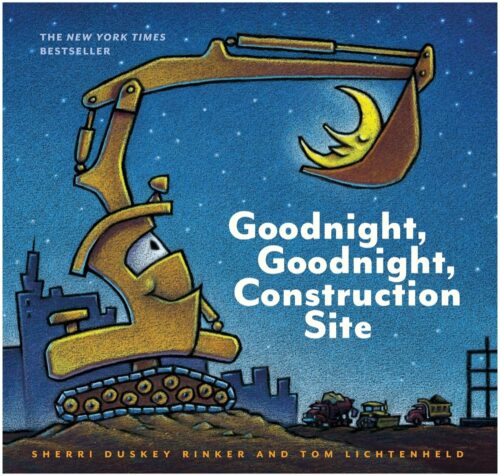
This book has been on my mind a lot lately. Not just because my son absolutely adores it, but also because the sequel, Mighty Mighty Construction Site, will be coming out in 2017 (and it’s a proper sequel with lots and lots of female construction equipment characters in it too, I’ll add). I was at dinner with a friend the other day when she mentioned off-handedly that the original book had been a slush pile find. What? Really? That sounded like a lovely rumor more than anything else. So I did a tiny bit of internet digging and lo and behold found this Author Spotlight interview with Ms. Rinker. In it she says the following:
“I guess the great thing about my submission to the infamous ‘slush pile’ at that time was that I honestly didn’t know any better. I made a long (VERY long) list of publishers who accepted slush and just started working down the line.”
Goodnight Goodnight Construction Site would go on to become a hugely successful New York Times bestselling picture book. All the more impressive when you learn that she submitted the manuscript to only one publisher.
Good Masters! Sweet Ladies! Voices From a Medieval Village by Laura Amy Schlitz

One forgets that occasionally Newbery Award winners are slush pile finds. Yet if I’m going to be completely honest, this is the only case I know of personally. Before you go about assuming that the book was plucked from obscurity and then immediately won its author the honor that was her due (and rightly!), please remember that, as BookPage reported, it, “was plucked out of a slush pile by an assistant at Candlewick Press in 2000 and finally published seven years after the author submitted it.” Clever assistant, that. Between its discovery and its publication Ms. Schlitz would publish other books with Candlewick, like The Hero Schliemann (still one of the more delightful and underrated biographies out there for kids).
And finally, one of the most famous slush stories:
Harry Potter and the Philosopher’s Stone by J.K. Rowling

In this case we actually know the name of the woman who found Rowling’s manuscript in the pile at the Christopher Little Literary Agency. Bryony Evens (a name that sounds like it would fit in at Hogwarts rather well) conducted an interview once where she said the manuscript originally caught her eye because it had an unusual “clamp binding”.
This actually doesn’t really fit our trends here, since Rowling was applying for an agent and not sending directly to a publisher, but that’s neither here nor there.
The thing about these stories is that often when they’re reported not much is made of the editors’ contributions prior to publication. The bones of a great book might have been there, but it was how the book was shaped by multiple hands prior to publication that’s of particular note. I think it’s safe to say that none of these books would be the classics we know today without that invaluable editorial input.
Any other slush pile stories come to mind? I’m sure there are some famous books out there I’m just not thinking of. Lay them on me!

The Best Books of the Year lists are beginning to come out right around now. First we saw the Publishers Weekly List. Then the School Library Journal List was presented as part of a live feed on Kidlit TV. The New York Times released their Best Illustrated list for the year. Soon enough the other review journals will get on board, as will Brain Pickings with their annual picks of eclectic, original, artistic books. Marjorie Ingall will do a list of the best books of the year with Jewish themes and characters for Tablet Magazine, the New York Public Library will release their 100 Titles for Reading and Sharing, and on and on it goes.
I love lists. They make me happy. I enjoy few things quite as much as debating the relative merits of one book or another with colleagues. But since I left NYPL I’ve just been making my own little lists. It’s fun but a little lonely. To keep myself in the game I also decided to read every single picture book in 2016 and I think I came pretty close. But what should I do with all this knowledge? I’m not going to review every single amazing book I saw, that’s for sure.
That when this crazy idea slapped me upside the head with a rubber chicken.
What if I were to do not one list for 2016. Not two lists. Not three. What if I were to do one list for every single day in December? A list every day! It would have to be called . . . .
31 Days, 31 Lists!!
Oh yes!! And here’s how it’ll go. Each day in December this site will produce one list. Sometimes it’ll be a list you’d be able to find elsewhere (best picture books, nonfiction, etc.). Sometimes it’ll be a list you might need but wouldn’t necessarily find elsewhere (picture book readalouds, picture books with photography, etc.). And sometimes it’ll just be a trend I’ve noticed. All these books will be 2016 publications.
Sound like fun? Here’s the schedule:
December 1 – Board Books
December 2 – Board Book Adaptations
December 3 – Nursery Rhymes
December 4 – Picture Book Readalouds
December 5 – Rhyming Picture Books
December 6 – Alphabet Books
December 7 – Funny Picture Books
December 8 – Calde-Nots
December 9 – Picture Book Reprints
December 10 – Math Picture Books
December 11 – Bilingual Books
December 12 – International Imports
December 13 – Books with a Message
December 14 – Fabulous Photography
December 15 – Fairy Tales / Folktales
December 16 – Oddest Books of the Year
December 17 – Older Picture Books
December 18 – Easy Books
December 19 – Early Chapter Books
December 20 – Graphic Novels
December 21 – Poetry
December 22 – Fictionalized Nonfiction
December 23 – American History
December 24 – Science & Nature Books
December 25 – Transcendent Holiday Titles
December 26 – Unique Biographies
December 27 – Nonfiction Picture Books
December 28 – Nonfiction Chapter Books
December 29 – Novel Reprints
December 30 – Novels
December 31 – Picture Books
I don’t pretend that these lists will be complete or that they won’t miss some great publications out there. However, I will at least be able to highlight all those amazing books I’ve seen this year that I wasn’t able to review. And believe me when I say that 2016 was a doozy of a year when it came to fine and fabulous publications.
I cannot wait.


By:
Betsy Bird,
on 11/13/2016
Blog:
A Fuse #8 Production
(
Login to Add to MyJacketFlap)
JacketFlap tags:
middle grade historical fantasy,
Kate Saunders,
Best Books of 2016,
2016 imports,
2016 reviews,
Reviews 2016,
2016 middle grade fantasy,
2016 middle grade historical fiction,
Reviews,
middle grade fantasy,
Random House,
Best Books,
Delacorte Press,
WWI,
middle grade historical fiction,
Add a tag
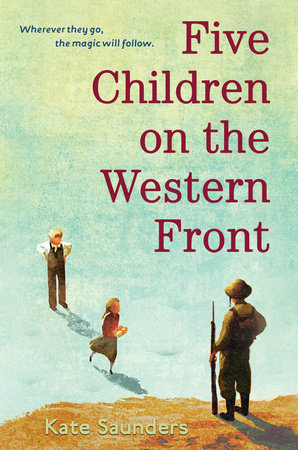 Five Children on the Western Front
Five Children on the Western Front
By Kate Saunders
Delacorte Press (an imprint of Random House)
$16.99
ISBN: 978-0-553-49793-9
Ages 9-12
On shelves now
Anytime someone writes a new prequel or sequel to an old children’s literary classic, the first question you have to ask is, “Was this necessary?” And nine times out of ten, the answer is a resounding no. No, we need no further adventures in the 100-Acre Woods. No, there’s very little reason to speculate on precisely what happened to Anne before she got to Green Gables. But once in a while an author gets it right. If they’re good they’ll offer food for thought, as when Jacqueline Kelly wrote, Return to the Willows (the sequel to The Wind in the Willows) and Geraldine McCaughrean wrote Peter Pan in Scarlet. And if they’re particularly talented, then they’ll do the series one better. They’ll go and make it smart and pertinent and real and wonderful. They may even improve upon the original. The idea that someone would write a sequel to Five Children and It (and to a lesser extent The Phoenix and the Carpet and The Story of the Amulet) is well-nigh short of ridiculous. I mean, you could do it, sure, but why? What’s the point? Well, as author Kate Saunders says of Nesbit’s classic, “Bookish nerd that I was, it didn’t take me long to work out that two of E. Nesbit’s fictional boys were of exactly the right ages to end up being killed in the trenches…” The trenches of WWI, that is. Suddenly we’ve an author who dares to meld the light-hearted fantasy of Nesbit’s classic with the sheer gut-wrenching horror of The War to End All Wars. The crazy thing is, she not only pulls it off but she creates a great novel in the process. One that deserves to be shelved alongside Nesbit’s original for all time.
Once upon a time, five children found a Psammead, or sand fairy, in their back garden. Nine years later, he came back. A lot has happened since this magical, and incredibly grumpy, friend was in the children’s lives. The world stands poised on the brink of WWI. The older children (Cyril, Anthea, Robert, and Jane) have all become teenagers, while the younger kids (Lamb and newcomer Polly) are the perfect age to better get to know the old creature’s heart. As turns out, he has none, or very little to speak of. Long ago, in ancient times, he was worshipped as a god. Now the chickens have come home to roost and he must repent for his past sins or find himself stuck in a world without his magic anymore. And the children? No magic will save them from what’s about to come.
A sequel to a book published more than a hundred years ago is a bit more of a challenge than writing one published, say, fifty. The language is archaic, the ideas outdated, and then there’s the whole racism problem. But even worse is the fact that often you’ll find character development in classic titles isn’t what it is today. On the one hand that can be freeing. The author is allowed to read into someone else’s characters and present them with the necessary complexity they weren’t originally allowed. But it can hem you in as well. These aren’t really your characters, after all. Clever then of Ms. Saunders to age the Lamb and give him a younger sister. The older children are all adolescents or young adults and, by sheer necessity, dull by dint of age. Even so, Saunders does a good job of fleshing them out enough that you begin to get a little sick in the stomach wondering who will live and who will die.
This naturally begs the question of whether or not you would have to read Five Children and It to enjoy this book. I think I did read it a long time ago but all I could really recall was that there were a bunch of kids, the Psammead granted wishes, the book helped inspire the work of Edgar Eager, and the youngest child was called “The Lamb”. Saunders tries to play the book both ways then. She puts in enough details from the previous books in the series to gratify the Nesbit fans of the world (few though they might be) while also catching the reader up on everything that came before in a bright, brisk manner. You do read the book feeling like not knowing Five Children and It is a big gaping gap in your knowledge, but that feeling passes as you get deeper and deeper into the book.
One particular element that Ms. Saunders struggles with the most is the character of the Psammead. To take any magical creature from a 1902 classic and to give him hopes and fears and motivations above and beyond that of a mere literary device is a bit of a risk. As I’ve mentioned, I’ve not read “Five Children and It” in a number of years so I can’t recall if the Psammead was always a deposed god from ancient times or if that was entirely a product from the brain of Ms. Saunders. Interestingly, the author makes a very strong attempt at equating the atrocities of the Psammead’s past (which are always told in retrospect and are never seen firsthand) with the atrocities being committed as part of the war. For example, at one point the Psammead is taken to the future to speak at length with the deposed Kaiser, and the two find they have a lot in common. It is probably the sole element of the book that didn’t quite work for me then. Some of the Psammead’s past acts are quite horrific, and he seems pretty adamantly disinclined to indulge in any serious self-examination. Therefore his conversion at the end of the book didn’t feel quite earned. It’s foolish to wish a 250 page children’s novel to be longer, but I believe just one additional chapter or two could have gone a long way towards making the sand fairy’s change of heart more realistic. Or, at the very least, comprehensible.
When Ms. Saunders figured out the Cyril and Robert were bound for the trenches, she had a heavy task set before her. On the one hand, she was obligated to write with very much the same light-hearted tone of the original series. On the other hand, the looming shadow of WWI couldn’t be downplayed. The solution was to experience the war in much the same way as the characters. They joke about how short their time in the battle will be, and then as the book goes along the darkness creeps into everyday life. One of the best moments, however, comes right at the beginning. The children, young in the previous book, take a trip from 1905 to 1930, visit with their friend the professor, and return back to their current year. Anthea then makes an off-handed comment that when she looked at the photos on the wall she saw plenty of ladies who looked like young versions of their mother but she couldn’t find the boys. It simply says after that, “Far away in 1930, in his empty room, the old professor was crying.”
So do kids need to have read Five Children and It to enjoy this book? I don’t think so, honestly. Saunders recaps the originals pretty well, and I can’t help but have high hopes for the fact that it may even encourage some kids to seek out the originals. I do meet kids from time to time that are on the lookout for historical fantasies, and this certainly fits the bill. Ditto kids with an interest in WWI and (though this will be less common as the years go by) kids who love Downton Abbey. It would be remarkably good for them. Confronting issues of class, disillusion, meaningless war, and empathy, the book transcends its source material and is all the better for it. A beautiful little risk that paid off swimmingly in the end. Make an effort to seek it out.
On shelves now.
Source: Final copy sent from publisher for review.
Like This? Then Try:
Other Blog Reviews: educating alice
Professional Reviews:


By:
Betsy Bird,
on 11/9/2016
Blog:
A Fuse #8 Production
(
Login to Add to MyJacketFlap)
JacketFlap tags:
Lois Lowry,
John Parra,
Astrid Lindgren Memorial Award,
Make Way for Ducklings,
Robert McCloskey,
Fusenews,
Me stuff,
New York Times Best Illustrated,
Marjorie Ingall,
Are You an Echo?,
Eddie and Ozzie Award,
World Science Fiction Society,
Add a tag
 Remember the moment at the end of Harry Potter and the Goblet of Fire when he funds Fred and George’s joke shop? What is it he says to them? Ah yes. “I could do with a few laughs. We could all do with a few laughs. I’ve got a feeling we’re going to need them more than usual before long.” I feel like, once again, Rowling put her finger on the pulse of what we need to hear. Today’s post is in honor of that spirit.
Remember the moment at the end of Harry Potter and the Goblet of Fire when he funds Fred and George’s joke shop? What is it he says to them? Ah yes. “I could do with a few laughs. We could all do with a few laughs. I’ve got a feeling we’re going to need them more than usual before long.” I feel like, once again, Rowling put her finger on the pulse of what we need to hear. Today’s post is in honor of that spirit.
Here’s a little happy news for you to kick it all off. The World Science Fiction Society (WSFS), coordinator of the World Science Fiction Convention (WorldCon) has given first approval to a new Young Adult Science / Fantasy Award. The problem? It needs a name! That’s where you come in. There’s a name-the-award-survey out there, but the deadline is November 15th. Now, could we talk about doing something similar for ALA’s YALSA Award for Excellence in Nonfiction for Young Adults? Perhaps rename it and stat?
In other news, the nominees for the Astrid Lindgren Memorial Award for 2017 were announced. If you’re unfamiliar with that particular award, it’s the one with the biggest monetary prize attached to it. The prize can go to any author, illustrator, storyteller or “reading promoter”. American nominees on this year’s list include:
Anderson, Laurie Halse
Bányai, István
Blume, Judy
Carle, Eric
Children’s Literature New England (CLNE) & The Examined Life (EXL) Organisation
Dezsö, Andrea
Friends of African Village Libraries (FAVL) Organisation
Kalman, Maira
LeGuin, Ursula
Lowry, Lois
Maguire, Gregory
Neighborhood Bridges
Pellowski, Anne
Room to Read
Shihab Nye, Naomi
Taylor, Mildred
On Saturday I offered you the chance to win some original Sophie Blackall art. Today, I’m offering you the chance to bid on some original John Parra art. In 2017 his book Frida and Her Animalitos, written by Monica Brown, will hit shelves everywhere. Now you have a chance to bid on this painting, inspired by the book by its illustrator:
Gorgeous, no? Best of all is the cause. SCBWI-IL is auctioning it during the week following Prairie Writer’s and Illustrator’s Day 2016 to raise funds for SCBWI-Illinois’ Diversity Initiatives. Better hurry, though. Bidding ends Saturday, November 12th. More info here.
I’ve very much been enjoying the multiple articles out there about Are You an Echo?, that remarkable picture book biography/poetry collection about Misuzu Kaneko. First there was this 7-Imp interview with David Jacobson, the writer/translator of the book. Then there was this great piece over at Playing By the Book that gives additional background information about its illustrator Toshikado Hajiri. Love it. Be sure to check out the interior art at 7-Imp here as well.
It occurs to me that I don’t think I’ve ever had a chance to examine Robert McCloskey’s artwork and sketches up close before. If I were in Boston I could remedy the situation with the upcoming Make Way for Ducklings: The Art of Robert McCloskey, held at the Museum of Fine Arts Boston. Good to know about in any case.
It’s not uncommon for me to be the last to know when a picture book has struck a nerve. Such was the case with Shmelf the Hanukkah Elf, though if I’d taken even two seconds to think about it I probably could have seen it coming. Marjorie Ingall slices and dices the book, clarifying precisely why what it does doesn’t work. There’s also a truly lovely shout out in there for Dear Santa, Love Rachel Rosenstein which I gave too little attention to when it came out. Well played, Marjorie.
By the way, I feel I should also mention her stellar post How to Explain the Refugee Crisis to Kids as well. If you read nothing else today, read this.
 Oh. I won a thing but I don’t think I mentioned it before. Remember when I said in an earlier post that A Fuse #8 Production was nominated for a 2016 FOLIO: Eddie and Ozzie Award? Well, it won! Yep! Neat!
Oh. I won a thing but I don’t think I mentioned it before. Remember when I said in an earlier post that A Fuse #8 Production was nominated for a 2016 FOLIO: Eddie and Ozzie Award? Well, it won! Yep! Neat!
Conspiracy theories and children’s books: Two great tastes that taste great together. Nowhere more true than in the recent 100 Scope Notes piece We Found a (Man in the Yellow) Hat? It ties an old picture book to a new one in an original way. No small task.
Boy, if it weren’t for the Cubs winning the World Series, I’d swear the universe had it out for me. Now I hear that the Rosenbach of the Free Library of Philadelphia lost a significant chunk of its case against the Sendak Estate? Doggone it. That’s it. I’m moving to Australia.
Hey! Did you know that there’s a Chicago Book Expo? News to me. Better still, there’s a neat event going on there called Our Voices Initiative: Encouraging Diversity in Publishing. Here’s the program description:
The demand for diverse, quality books is great. Independent publishers have responded with an explosion of books by and about diverse people. Join members of the American Library Association Our Voices advisory council, who represent professionals from across the book ecosystem, to discuss the issue of diversity in publishing and the work they are doing to promote and support diverse content. Come and add your voice to the discussion.
Panelists will include Curt Matthews, Founder and Chairman of the Board for the Chicago Review Press and Independent Publisher’s Group; Jeff Deutsch, Director of the Seminary Co-op Bookstores, which includes 57th Street Books; Felicia Shakespeare, best-selling author and library media specialist; and Joy Triche, Founder and Publisher of Tiger Stripe Publishing. Donna Seaman, Editor, Adult Books at Booklist, will moderate the discussion.
You can see more information at this Facebook link too.
The New York Times Best Illustrated list of 2016 children’s books was released earlier this month. Some good choices. Some choices that cause me to grind my teeth in a counter-clockwise direction. In other words, a pretty standard year.
Fun Fact: Were you aware that Lois Lowry’s Anastasia Krupnik books were never meant to be a series? Do you know what Ms. Lowry thinks about censorship? Do you know what her next projects are (and that they’re completely out of her genre)? Good news then. Over at the Cotsen Children’s Library the podcast The Bibliofiles has an interview with Lowry about all these things. And more.
Daily Image:
I’m fine. I’m all fine here now, thank you. How are you?
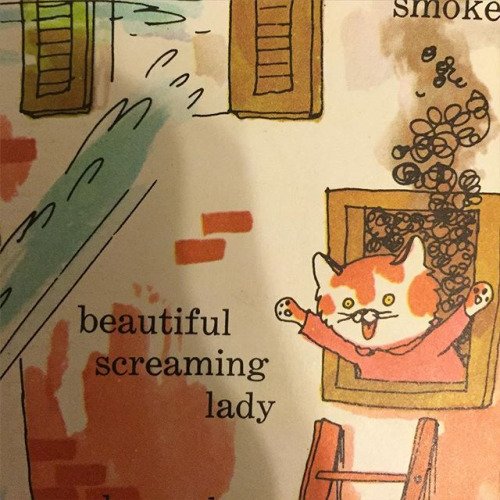

For those of you in the Chicago area, here’s a bit of happiness. This Saturday I’ll have the pleasure of hosting artist Rebecca Dudley of the incomparable Hank Finds an Egg in my Literary Salon. Here’s the long and short of it:

Saturday, November 12th, 1:30 – 2:30, Community Meeting Room, 1st Floor
Artist Rebecca Dudley wowed the publishing world when she adapted her remarkable tiny world into the picture books HANK FINDS AN EGG and HANK HAS A DREAM. Join this fantastic illustrator for an explanation of her process and a peek into the remarkable worlds she creates. No registration required.
And for fun, check out this awesome diagram she created on her process. I just love this thing:

See you then!

Though, to be perfectly honest, Saturday’s post sort of covered all the bases there. Still and all, I wanted to do something in honor of the day. It’s tricky. I could do a post of links, like 100 Years of Women in Congress—12 Political Pioneers to Introduce to Kids or Vote Here: Books for Tweens About Elections or If Boys Could Vote. Or I could whip up a list of recent picture books about elections in all their myriad forms. But none of that seems special enough.
So I sat down with my husband and James Kennedy last night over ice cream to hash out the problem. James mentioned off-handedly the picture book Duck for President, which is a notable title partly because it’s so old it contained outdated Bill-Clinton-playing-the-saxophone references. I mentioned I liked that book and we got to talking about whether or not all these books for small children about elections are new or not. Are there older ones out there? Classic ones? Books like . . .

Wait. That’s not a book. That’s a music score. But surely SURELY there are older election titles out there. Books that weren’t published in the last 10 years or so.
Well, I found a couple. Actually I found a lot, but not that many with book jacket images online. In respect of the day, then, enjoy this smattering of older children’s books on the topic of elections:
Let’s Go to Vote by Agnes McCarthy (1962)

A red book from the 60s on voting by someone named McCarthy? Will wonders never cease? Also . . . is that policeman encouraging that girl to vote? Oh dearie dear.
Right On, Dellums! My Dad Goes to Congress by Bob and Lynn Fitch (1971)

There is nothing I don’t love about this boy. His hat. The fact he’s supposedly saying “right on”. The power salute. I know his dad’s the one running, but I’d vote for that kid any day of the week. The dad, by the way, was Ron Dellums, and the salute was sort of his thing. Google him and you’ll see him doing it quite a bit. The description of the book reads, “After a long campaign, eight-year-old Brandy Dellums’ father is elected as the first black Congressman from Berkeley, California, and the family moves to Washington, D.C.”
Maggie Marmelstein for President by Marjorie Weinman Sharmat, ill. Ben Shecter (1975)
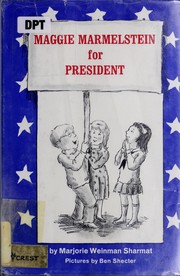
Alas, poor Maggie. She had quite the series in the 70s, with all sorts of editions. Too much time has passed, however, and though I’ve no doubt that there are libraries all over the country that still carry her books, for the most part they’re forgotten. I sort of love the vitriol in this description too: “Maggie Marmelstein thought that her friend Thad would be a good class president. But when he refuses her offer to manage his campaign, she decides to run against him with a vengeance.” Rowr! VENGEANCE SHALL BE MAGGIE’S!
It’s a Free Country! A Young Person’s Guide to Politics & Elections by Cynthia K. Samuels (1988)
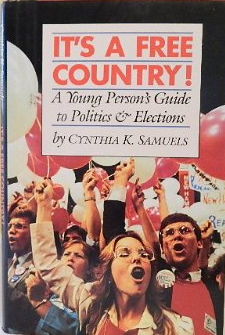
Are they singing? Clearly they’re singing. But what, I ask of you, would they have been singing in 1988?
Electing J.J. by James VanOosting (1990)
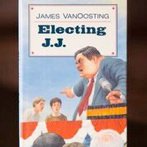
Best I could do in terms of finding an image. The plot reads, “In Framburg, a small farming community, lots of families face the loss of their farms. Three boys, one of them politically aware J.J. Ellison, decide to organize a campaign against the corrupt mayor of Framburg who is profiting from everyone’s misfortune.”
NEATE to the Rescue by Deborah Chocolate (1992)
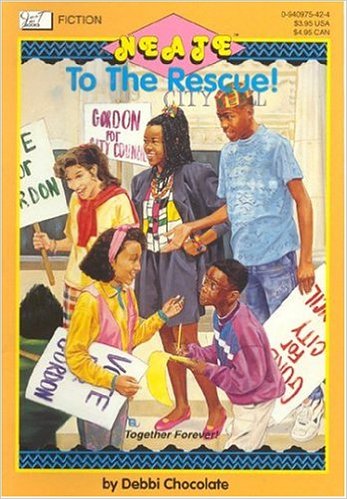
I found this one through the Chicago Public Library. Apparently it was a Chicago-based series in the 90s and this is the first one Ms. Chocolate wrote. The plot is about a, “campaign for the reelection of Naimah’s mother to the city council. It’s a bitter struggle between the respected woman and her white male opponent, an unabashed racist who advocates the re-zoning of community districts to quash African American voting power.” Yep. A whole book for kids on re-zoning. Um . . . can we get this republished with a new cover, please? On second thought, I love this cover. Can we make it historical fiction then?
Those are the best I could find. I didn’t want to go much further than The Boy Who Ran for President, due to its recent popularity and all. Instead, let’s finish with a bang. I give you . . .
Duck for President!


By:
Betsy Bird,
on 11/6/2016
Blog:
A Fuse #8 Production
(
Login to Add to MyJacketFlap)
JacketFlap tags:
Ursula Vernon,
Leila Sales,
Christine Mari Inzer,
Alison DeCamp,
Funny Girl,
Adrianne Chalepah,
Akilah Hughes,
Delaney Yeager,
Mackenzie Yeager,
Shannon Hale,
Sophie Blackall,
Write Girl,
Rita Williams-Garcia,
Libba Bray,
Uncategorized,
Mitali Perkins,
Lisa Graff,
Cece Bell,
Lenore Look,
Charise Mericle Harper,
Carmen Agra Deedy,
Jenni Holm,
Raina Telgemeier,
Meghan McCarthy,
Deborah Underwood,
Lisa Brown,
Kelly DiPucchio,
Amy Ignatow,
Add a tag
Ladies and gentlemen . . . the moment I’ve been waiting for.
Wait! Wait! Background information first!
So for years I worked as a children’s librarian and I’d get girl after girl after girl coming up to my desk asking for funny books. I credit some of this to Diary of a Wimpy Kid. The boys and the girls loved that series and wanted more of the same. Sometimes they wanted it in a notebook novel format, like Kinney’s book. Sometimes they just wanted something hilarious, and they seriously didn’t care who wrote it. So I’d grab books for them and then it slowly began to dawn on me. Huh. For all that I could find some pretty fantastic and hilarious books out there for kids, where were the funny story collections written by women? Turns out, there weren’t any.
Until now.
I would like you to join me in applauding the following authors and author/illustrators . . . .
- Cece Bell
- Sophie Blackall
- Libba Bray
- Lisa Brown
- Adrianne Chalepah
- Alison DeCamp
- Carmen Agra Deedy
- Kelly DiPucchio
- Lisa Graff
- Shannon Hale
- Charise Mericle Harper
- Jenni Holm
- Akilah Hughes
- Amy Ignatow
- Christine Mari Inzer
- Lenore Look
- Meghan McCarthy
- Mitali Perkins
- Leila Sales
- Raina Telgemeier
- Deborah Underwood
- Ursula Vernon
- Rita Williams-Garcia
- Delaney Yeager
- and Mackenzie Yeager
Each one of these women has contributed to my new book Funny Girl: Funniest. Stories. EVER.
Behold! The cover by the aforementioned Charise Mericle Harper:

And here’s the full jacket in its entirety:

A portion of the proceeds of this book go to Write Girl, a Los Angeles-based creative writing and mentoring organization that matches girls with women writers who mentor them in creative writing.
When’s it out? May 9th, 2017! Feel free to pre-order it.
Oh! And while I’m thinking of it, there’s this other really fun thing that just started that I have to let you know about. As I may have mentioned before, my husband’s first book The Secrets of Story just came out recently and I could be prouder. He’s already put up a couple great videos alongside it (the latest is here and is about those little moments of humanity that make you like a character). But fun upon fun upon fun, he’s created a podcast with YA author and 90-Second Newbery Film Festival creator James Kennedy and it may well be my favorite thing of all time. I love it when James and Matt get together because they agree on NOTHING! And now they’ve a podcast together where they can extol the beauty of that nothing together. It’s huge fun for me, and it ends with a little feature where they mention a story idea they had that they decided wouldn’t work and give it away (as it were) to the masses for use. So if you like the process of writing or you just like banter, I’ve your new favorite podcast. The Secrets of Storytelling podcast is available through iTunes. Subscribe today!


By:
Betsy Bird,
on 11/5/2016
Blog:
A Fuse #8 Production
(
Login to Add to MyJacketFlap)
JacketFlap tags:
Stranger Things,
Wait Till Helen Comes,
Videos,
book trailers,
Bookfest,
Lemony Snicket,
A Series of Unfortunate Events,
Matthew Reinhart,
Charlie Brown,
Amanda Palmer,
Mary Downing Hahn,
Erica Perl,
pop-ups,
Bank Street College of Education,
Add a tag
Stranger Things, I credit you with this finally happening.
Let’s think about doing a Girl With the Silver Eyes film next! Thanks to Liz Burns for the link.
Now when I heard that Nieman Marcus was offering 36 Caldecott Award winning picture books for $10,000 . . . *checks notes* I’m sorry. I typed the wrong number there. I’ll begin again.
When I heard that Nieman Marcus was offering 36 Caldecott Award winning picture books for $100,000 (that’s better) I was a bit baffled. Perhaps these would be books that were all signed by their authors and illustrators? Well, they are first printings, or early editions, yes. But one can assume that you could purchase 36 such similar titles for far less money. This is part of Nieman Marcus’s “Fantasy Gifts” collection, and the idea is that they’ll donate $10,000 to their own charity if you buy this collection.
Now the collection of 36 has been curated by Johnnycake Books and E.M. Maurice Books. Here is the video that accompanies it. See if you see what I saw. Click on the image below:
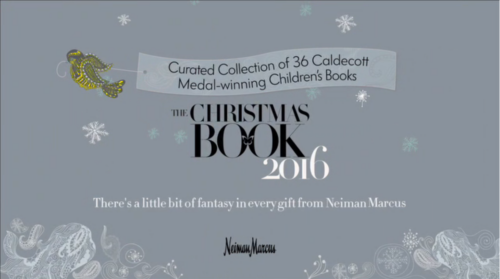
Did you notice the books chosen to appear on this list? I am a librarian, so my take on curation is going to be different from that of a bookseller. That said, I have to wonder how many booksellers today would hand a child a stack of Caldecott books that included problematic titles like They Were Strong and Good. This is not to say that I think the book should be removed from library or bookstore shelves or anything like that. But if you’re looking for books that speak to kids today, then for the love of all that is good and holy switch that book out for something with some contemporary gravitas like Jerry Pinkney’s The Lion and the Mouse. My two cents. Thanks to Sharyn November for the link.
Oo! This is neat. Matthew Reinhart goes in-depth on pop-up books.
Interesting that he cites Transformers toys as being so influential on him. Sorry, Autobots. Thanks to 100 Scope Notes for the link.
This is neat. Kidlit TV created a livestream of the Bank Street Bookfest this year, and now the full series of events is available in full. Would that the Newbery/Caldecott/Wilder Award ceremonies were done in the same way. I dare to dream!
I know some of you out there harbor unkind thoughts about Amanda Palmer. That’s fine. But she apparently has an album out with her dad, Jack Palmer, who has a pleasant Leonard Cohenish quality to his voice, and one of their songs was turned into an animated video akin to the Brothers Quay. I just like the song:
And if you prefer, you could watch this one with the world’s GREATEST sleeping baby. Seriously. He wakes up ONCE in the course of this film (if you don’t count the end). I don’t think that’s a trick. Plus it was filmed with the cast of Welcome to Night Vale. So. Right there.
In terms of this latest Series of Unfortunate Events trailer, my thoughts are that they get two points for including Klaus’s glasses (thereby already improving upon the film) but one point is deducted for Violet’s hair ribbons, or lack thereof. Interesting that they made her SO much older. Not that I wanted a 12-year-old mock-married to Olaf. Ugh.
Zut! I wish I’d seen this next book trailer before Halloween! It would have tied in so beautifully. I tell you, it is hard to come up with an original trailer for picture books in this day and age. Perl knocks it out of the park.
As for our off-topic review of the day, this one’s a no-brainer. There really isn’t a connection to children’s books here, and I should probably save it for Christmas but . . . aw, I just can’t. For the Stranger Things fans out there:

Unless you missed it, recently the New York Times Best Illustrated list was released. And amongst the ten books listed was a very lovely title illustrated by Ms. Sophie Blackall and called A Voyage in the Clouds: The (Mostly) True Story of the First International Flight by Balloon in 1785. Written by Matthew Olshan it has it all. Jealousy. Foul play. Public urination. The works!
To celebrate the book’s inclusion on the list, we’re doing a bit of a giveaway. A giveaway where you can actually win a piece of Sophie Blackall art of your very own. THIS art:

What do you need to do? It’s easy! Sophie had an idea to get out the vote in a small way of her own. Just share here in the comment section of this post your preferred mode of transportation you will use to get to the polls on Tuesday. By air, by land, by sea, you name it. The sillier, the better
Submit your suggestions by the end of Tuesday. You’ll be getting out the vote and potentially winning gorgeous art. It’s win-win!


By:
Betsy Bird,
on 11/3/2016
Blog:
A Fuse #8 Production
(
Login to Add to MyJacketFlap)
JacketFlap tags:
Mo Willems,
Reviews,
Hyperion,
Best Books,
Dan Santat,
easy books,
Best Books of 2016,
2016 reviews,
Reviews 2016,
Disney - Hyperion,
Add a tag
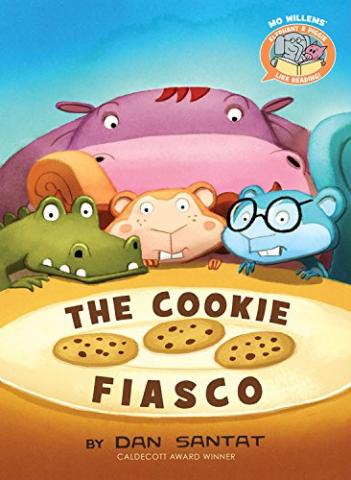 The Cookie Fiasco
The Cookie Fiasco
By Dan Santat
Additional Art by Mo Willems
Hyperion Books for Children (an imprint of Disney)
$9.99
ISBN: 978-1484726365
Ages 3-6
On shelves now
See, this is tricky. Very tricky indeed. On the one hand, as a reviewer of children’s books, not bound to any single periodical, I have the freedom to select any book I wish. As such, I like to highlight books that haven’t gotten a lot of attention. Imports, books from small presses, books that get lost in the ginormous publishing cycle each year, etc. It gives me a little kick. This isn’t to say I won’t review a bestseller, but what’s the point? The book gets lots of lovely money and doesn’t need my help. And though I absolutely adored the new easy book The Cookie Fiasco (part of the new Mo Willems “Elephant & Piggie Like Reading” series) I could see it sitting deservedly on the top of the New York Times bestseller list, as is right. A job well done then? Not quite. I made the mistake of reading some of the professional reviews of this book. Reviews that clearly had it in for this title from the start and failed to take into account what Dan Santat has managed to pull off here. It’s not just the art (which is far more complex than an initial reading yields). It’s not just the fact that it’s a brilliant story told in an easy book format with limited words. It’s not just the fact that it’s also a story about MATH (and why is it that no one is complimenting this book enough on that score?). It’s the fact that all these elements are combined together to make what I can honestly say is one of the best books of the year. Clever, funny, beautiful to look at, and an easy book that is actually easy (not a given), don’t pooh-pooh this one for its popularity. Take a moment instead to savor what Santat’s accomplished here. I like reviewing the underdogs, but sometimes the top dog IS the underdog. To prove it, I give you Example A: The Cookie Fiasco.
Three friends. Four cookies. It’s a conundrum, to say the least. When two squirrels, a hippo, and a crocodile find themselves with an insufficient number of snacks they attempt to solve the problem in a number of different ways. Perhaps someone will not get a cookie? Impossible! “We need equal cookies for all!” Could two people share one cookie together? Unfair idea. Do crocodiles actually like cookies? They do. Should they share by size? Unfair when you’ve a hippo for a friend. As the tension increases, the hippo finds the best way to relieve stress is to break the cookies into halves. Next thing you know there are twelve pieces. That means each person gets three apiece! Problem solved! Now about those three glasses of milk . . .
How would you definite a fiasco? In one of my favorite episodes of This American Life (titled, appropriately enough, “Fiasco!”) they defined the word as, “when something simple and small turns horribly large”. I don’t think you can truly appreciate this concept unless you have children. No one quite like a small, young person can take a basic idea like, say, eating banana slices rather than a whole banana before bed, and turn it into WWIII, complete with tears, mess, unearthly cries, and parents that vow they will never slice another banana again as long the world does turn. Children begat chaos and, as such, children LOVE controlled chaos. The kind of chaos that ultimately gets cleaned up by grown-ups in the end. Recently I’ve been noticing how it’s used in books more and more. Whether it’s the aquatic antics of Curious George Gets a Medal, the joyous free-for-all of I Ain’t Gonna Paint No More or what I consider to be the most absolutely insane, grotesque, explosion of the id upon the page, A Day at the Firehouse by Richard Scarry (seriously, you have to check it out), I love me a good jaunt through the wild side. Santat taps into this snowball effect all too well. The “fiasco” of this book sounds tame (the gentle breaking apart of the cookies) but like my 2-year-old son, the characters in this book react as if the hippo were snapping the very tendons of their limbs. It’s a gentle reminder that for kids, sometimes the greatest fiasco comes in bite-sized pieces.
Let it never be said that I am a librarian that cares about leveling. Lexile, Fountas and Pinnell, you name it, it’s not my cup of tea. As a public librarian I don’t really have to care, though. That’s my prerogative. Now I will freely admit that for an easy book The Cookie Fiasco has some slightly more complex words. Heck, the word “fiasco” is even in the title. That said, I really and truly believe that Santat did a stand up and cheer job with keeping the text on the simple side. My five-year-old is currently learning to read and doesn’t have an overt amount of difficulty getting through this text. Extra Added Bonus: The overly dramatic moments allow her to rage against the heavens with drama inflected voices. A nice plus.
You don’t need to teach your five-year-old fractions, you know. You’re not going to fail the Parent of the Year awards if you prefer to wait until the kid is a little older to bring them up. It’s fine. But by the same token, there’s nothing out there saying that you can’t be sneaky about them. The fact that the solution to everyone’s problems is fraction-based is notable. I try to read as many math books for kids published in a given year as possible and let me tell you, it’s not easy to find them. The thing about The Cookie Fiasco, though, is that it’s not promoting itself as a math book in any way, shape, or form. Santat just works it oh-so-casually into the text so that by the time you stumble upon it you’re caught off-guard. And hey, if you happen to mention that these are fractions to a kid, and then show what you mean with some additional information . . . well, that’s just your prerogative, isn’t it? Clever parent.
So I’m talking to a friend the other day and the subject of this book comes up. “Do you think it could be a Caldecott winner?” they asked me. I was stunned. Under normal circumstances easy books do not win Caldecotts. It’s not unheard of for them to garner awards above and beyond the Geisel (see: Frog and Toad Together which won a Newbery) but nobody usually puts enough work into the art of an easy book to even start the discussion. Yet after my friend mentioned this possibility to me, I began to remember what Santat did with The Cookie Fiasco. A sane man would have just slapped together some pictures, grabbed his paycheck, and skedaddled. Santat, on the other hand, went a little crazy. He decided that the wisest course of action was to create teeny tiny multi-colored models of the heads of all his characters. That way, when they imagine different solutions to their cookie problem, the heads will indicate that this an idea and not what’s actually happening. Now look closely at those models. Even when they look simple, Santat’s obviously been thinking about them. For example, when the hippo suggests that the squirrels share a cookie together, the accompanying model is of a single squirrel body with a heads of the two characters attached. Did you notice that the heads are red and blue but that the body is purple? Love that attention to detail there. I also started paying attention to repetition in facial expressions. Insofar as I can tell, Dan never has the exact same facial expression on a character appear on its model version twice in a row. Either the mouth is slightly open or the eyes are looking in a different direction. Remarkable.
And now, an ode to good speech balloons. It is not a commonly known fact, but speech balloons can make or break a book. Done poorly, as they often are, they make good books bad. They draw attention to themselves and not to the action on the page. You might think that since Santat is constantly mucking with the font sizes and sometimes the fonts themselves in this book, that is a bad thing. You would be wrong. The placement of these speech balloons is superb. There is never a moment a parent, whether or not they’ve ever read a speech balloon a day in their life, will get confused about the order of who speaks when. Which, when you think about it, really is a speech balloon’s sole job anyway.
Finally . . . what I didn’t like about the book: The female squirrel’s ponytails. Seemed superfluous. They come right out. That’s about it.
As I mentioned before, book doesn’t need me to review it. It’s been on the New York Times bestseller list and will certainly garner a Geisel Award if there is any justice in the universe. It has sold mad bank and will continue to sell well into the future. That said, I feel a need to defend its honor. This isn’t some random title in a popular series. If it came out without the name “Mo Willems” anywhere in sight I bet it would STILL be a massive hit. It has humor and fractions and killer art, and all sorts of things going for it. I review very few easy books, and even fewer popular easy books, in a given year, but I can always make exceptions. And this book, put plainly, is exceptional. Top notch stuff all around.
On shelves now.
Source: Galley sent from publisher for review.

View Next 25 Posts
 “In Adam’s Fall, we sinned all.” That catchy little ditty was from one of the earlier abecedarian picture books for children in America (the 1784 edition of The New England Primer, in case you’re curious). Practically from our nation’s inception, alphabet books were a go-to resource for teaching children to read. Every year more and more of them come out, but how many can you name off the top of your head? Just before typing this I was reading Chicka Chicka Boom Boom to my son and marveling at how Bill Martin Jr. managed to create an actual honest-to-goodness alphabet classic. I don’t know if any of the books on today’s list will ever hit such heights, but I the alphabet books of 2016 have dabbled in some truly sophisticated fare.
“In Adam’s Fall, we sinned all.” That catchy little ditty was from one of the earlier abecedarian picture books for children in America (the 1784 edition of The New England Primer, in case you’re curious). Practically from our nation’s inception, alphabet books were a go-to resource for teaching children to read. Every year more and more of them come out, but how many can you name off the top of your head? Just before typing this I was reading Chicka Chicka Boom Boom to my son and marveling at how Bill Martin Jr. managed to create an actual honest-to-goodness alphabet classic. I don’t know if any of the books on today’s list will ever hit such heights, but I the alphabet books of 2016 have dabbled in some truly sophisticated fare. Is it as cool as it looks from the cover? My friend, it’s even cooler. Every year I have regrets about the books I didn’t have a chance to officially review. This year it included this book. It’s probably more for older kids and there’s one letter that I think they could have improved, but all told it’s a remarkable effort. It’s also a neat way of talking about our planet. AND it could well be a great book to take onto an airplane with a kid, since the shots will look somewhat familiar from 10,000 feet in the air.
Is it as cool as it looks from the cover? My friend, it’s even cooler. Every year I have regrets about the books I didn’t have a chance to officially review. This year it included this book. It’s probably more for older kids and there’s one letter that I think they could have improved, but all told it’s a remarkable effort. It’s also a neat way of talking about our planet. AND it could well be a great book to take onto an airplane with a kid, since the shots will look somewhat familiar from 10,000 feet in the air. I know a librarian who is so gaga over this book she’ll bring you around to it pretty quickly. There’s just one word a page, and it follows the story of a canine and its dogged (har har) pursuit of a mouse. If you’re looking for a really simple alphabet book with a clear plot and even clearer pictures, this is your best bet. I’ve a lot of really sophisticated alphabet books on this list today so it’s nice to have something on the younger end of the scale as well.
I know a librarian who is so gaga over this book she’ll bring you around to it pretty quickly. There’s just one word a page, and it follows the story of a canine and its dogged (har har) pursuit of a mouse. If you’re looking for a really simple alphabet book with a clear plot and even clearer pictures, this is your best bet. I’ve a lot of really sophisticated alphabet books on this list today so it’s nice to have something on the younger end of the scale as well.
































































































































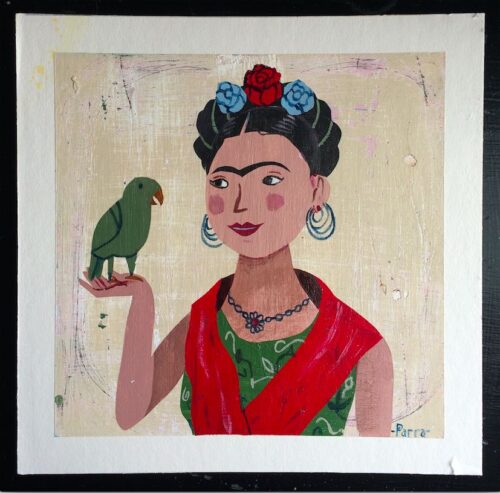
















Oops, Pounce, Quick, Run! reminds me a little of Alison Murray’s Apple Pie ABC of a few years ago. An alphabet book that tells a story about a dog.
Now that you mention it, you’re absolutely right. Same level of simplicity. Plus dog.